Desert and arid conditions are extreme: dry air, temperatures that can fluctuate between very hot and very cold (even in a 24 hour period), and months and months with little rain or moisture. Even so, many plants have adapted to these conditions and can be grown in desert and arid regions.
Here are 25 plants that can be grown in desert and arid gardens. Most will need some moisture to become established and most will benefit from the addition of organic planting mix or aged compost to the plant hole, but once established all of these plants can withstand hot temperatures and drought.
Look to local nurseries or public gardens for hints on which of these plants will grow in your garden as well as additional plants adapted to your area’s growing conditions. Use the experience of nearby gardeners to inform your plant choices.
Print out this list and take it to the garden center. A gardener there will help you find these plants and others with the ability to grow in your desert or arid garden. You can also click on the botanical name of each plant to get more How to Grow information here at Garden Chronicle.
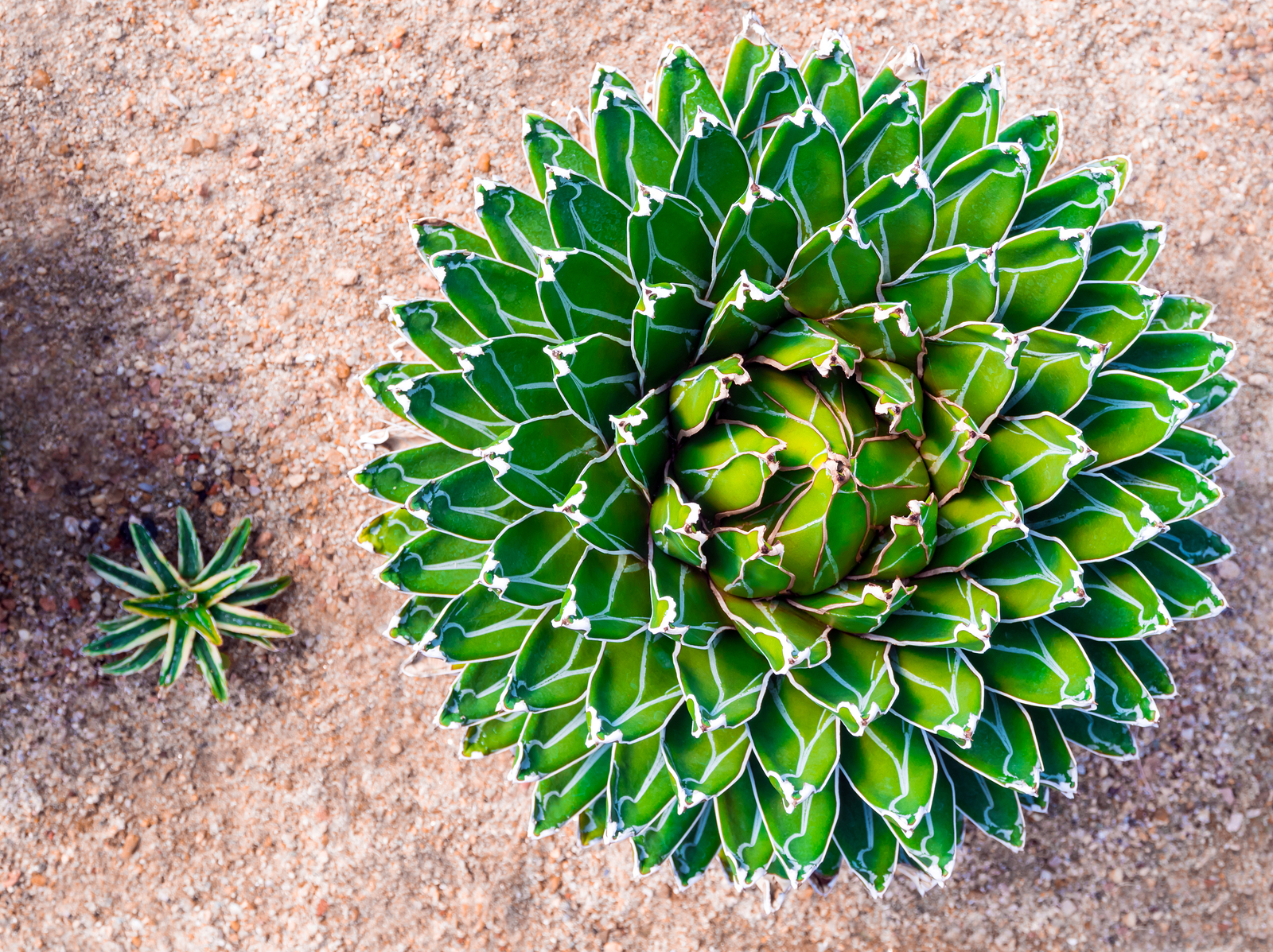 Agave spp. (Agave). Agaves are a large group of succulent plants including 100 known species. Most are native to warm and dry habitats across the southwestern United States into Mexico and Central America. Sizes vary from 12 inches to more than 10 feet in height; foliage colors range from gray-green to deep green. In common are their symmetrical shapes and tall flower stalks. They prefer dry, rocky, and well-drained soils. They are easy to grow and well adapted to coastal, inland, valley, and desert climates. Zones 8-11.
Agave spp. (Agave). Agaves are a large group of succulent plants including 100 known species. Most are native to warm and dry habitats across the southwestern United States into Mexico and Central America. Sizes vary from 12 inches to more than 10 feet in height; foliage colors range from gray-green to deep green. In common are their symmetrical shapes and tall flower stalks. They prefer dry, rocky, and well-drained soils. They are easy to grow and well adapted to coastal, inland, valley, and desert climates. Zones 8-11.
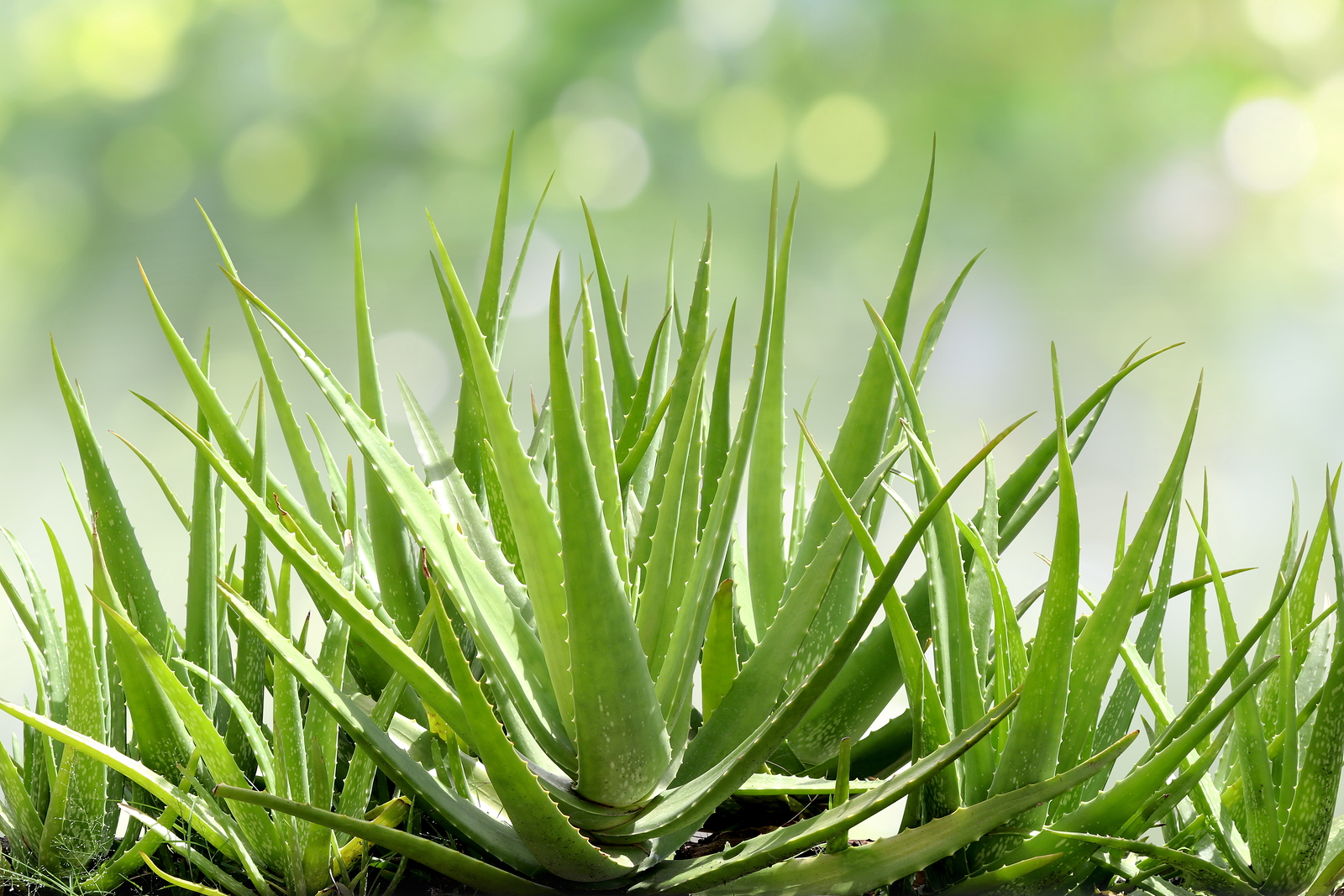 Aloe spp. (Aloe). Aloes are a large and varied group of succulent plants in many shapes and sizes. There are an estimated 365 species that range in size from less than 12 inches to more than 35 feet tall, from ground-hugging forms to shrubs ad trees. Most have thick fleshy foliage and stems. Leaves are arranged in rosettes and have toothed margins. Aloes need full sun and well-drained soils. Established plants generally need little care and only periodic watering during the summer months. Zones 8-11.
Aloe spp. (Aloe). Aloes are a large and varied group of succulent plants in many shapes and sizes. There are an estimated 365 species that range in size from less than 12 inches to more than 35 feet tall, from ground-hugging forms to shrubs ad trees. Most have thick fleshy foliage and stems. Leaves are arranged in rosettes and have toothed margins. Aloes need full sun and well-drained soils. Established plants generally need little care and only periodic watering during the summer months. Zones 8-11.
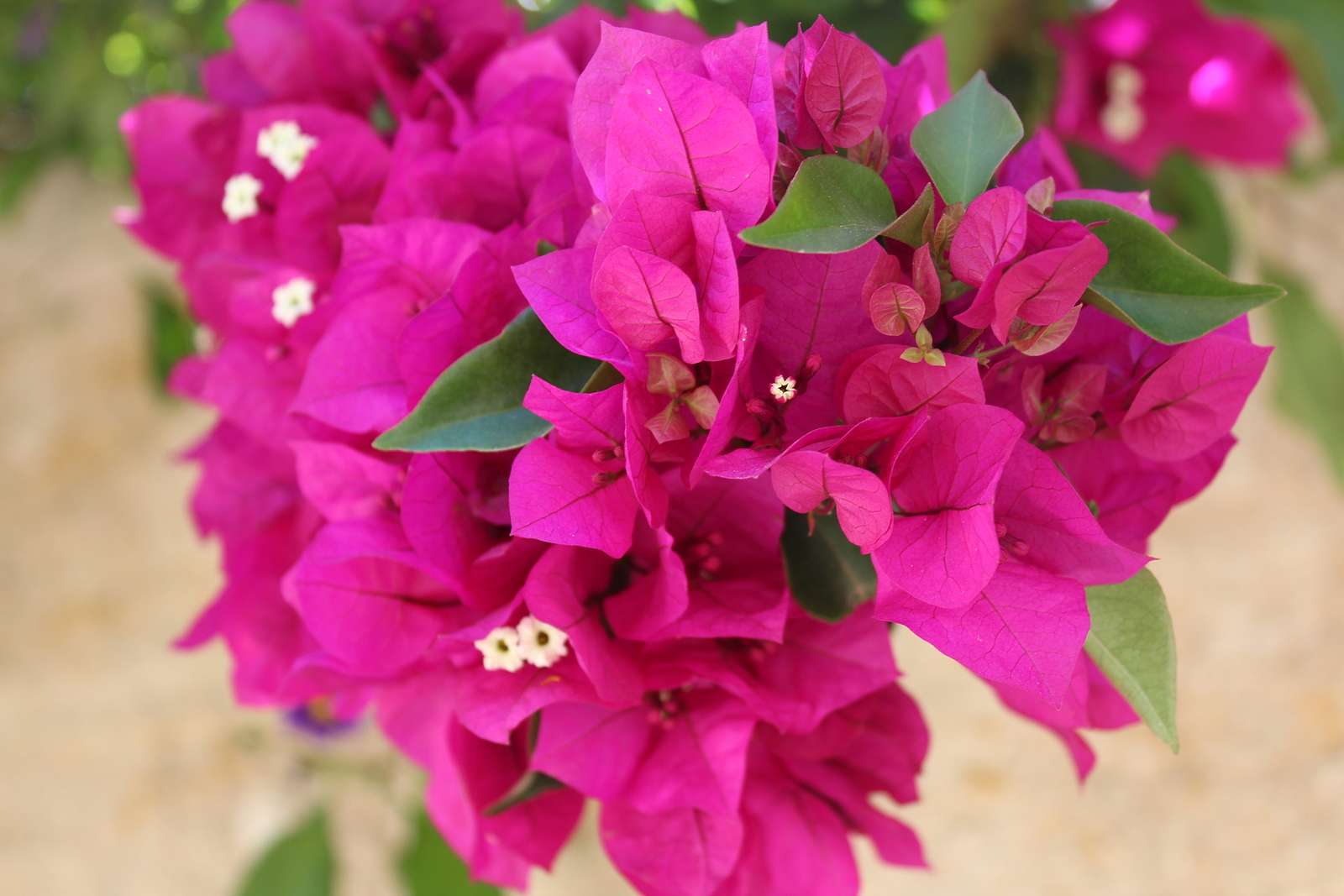 Bouganvillea spp. (Bouganvillea). The Bougainvillea genus includes about 14 species and numerous cultivars. These evergreen shrubs and woody vines are native to tropical and subtropical climates zones of South America. They are ideally suited to coastal and frost-free inland and low desert habitats. They thrive in full sun and summer heat and require only low amounts of supplemental water. Bougainvillea is commonly planted as vines on trellises, flowering accent shrubs in containers, as ground covers on slopes, and for cascading over walls. Zones 9-10.
Bouganvillea spp. (Bouganvillea). The Bougainvillea genus includes about 14 species and numerous cultivars. These evergreen shrubs and woody vines are native to tropical and subtropical climates zones of South America. They are ideally suited to coastal and frost-free inland and low desert habitats. They thrive in full sun and summer heat and require only low amounts of supplemental water. Bougainvillea is commonly planted as vines on trellises, flowering accent shrubs in containers, as ground covers on slopes, and for cascading over walls. Zones 9-10.
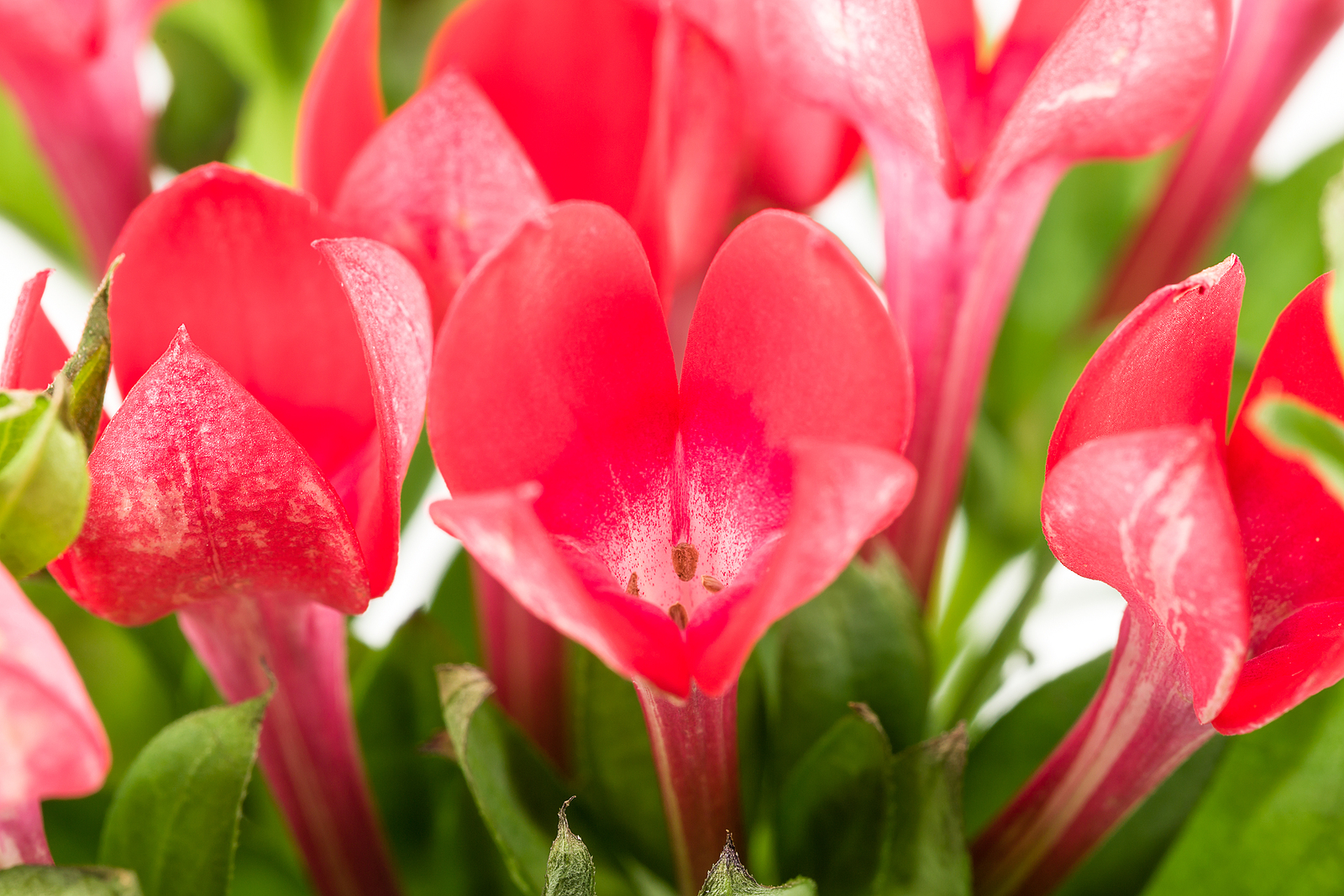 Bouvardia (Bouvardia longiflora). Bouvardia is an evergreen shrub–a Mexican native–grown for its dangling clusters of delicious-smelling flowers on refined, fine-textured, evergreen foliage. Choose Bouvardia for accent plantings, entries, patios, and containers. Place them near windows, doorways, walkways, and sitting areas where its fragrance can be enjoyed. Bouvardia wants morning sun followed by afternoon shade. grow Bouvardia in well-drained soil and water to keep the soil just moist. Zones 9-10.
Bouvardia (Bouvardia longiflora). Bouvardia is an evergreen shrub–a Mexican native–grown for its dangling clusters of delicious-smelling flowers on refined, fine-textured, evergreen foliage. Choose Bouvardia for accent plantings, entries, patios, and containers. Place them near windows, doorways, walkways, and sitting areas where its fragrance can be enjoyed. Bouvardia wants morning sun followed by afternoon shade. grow Bouvardia in well-drained soil and water to keep the soil just moist. Zones 9-10.
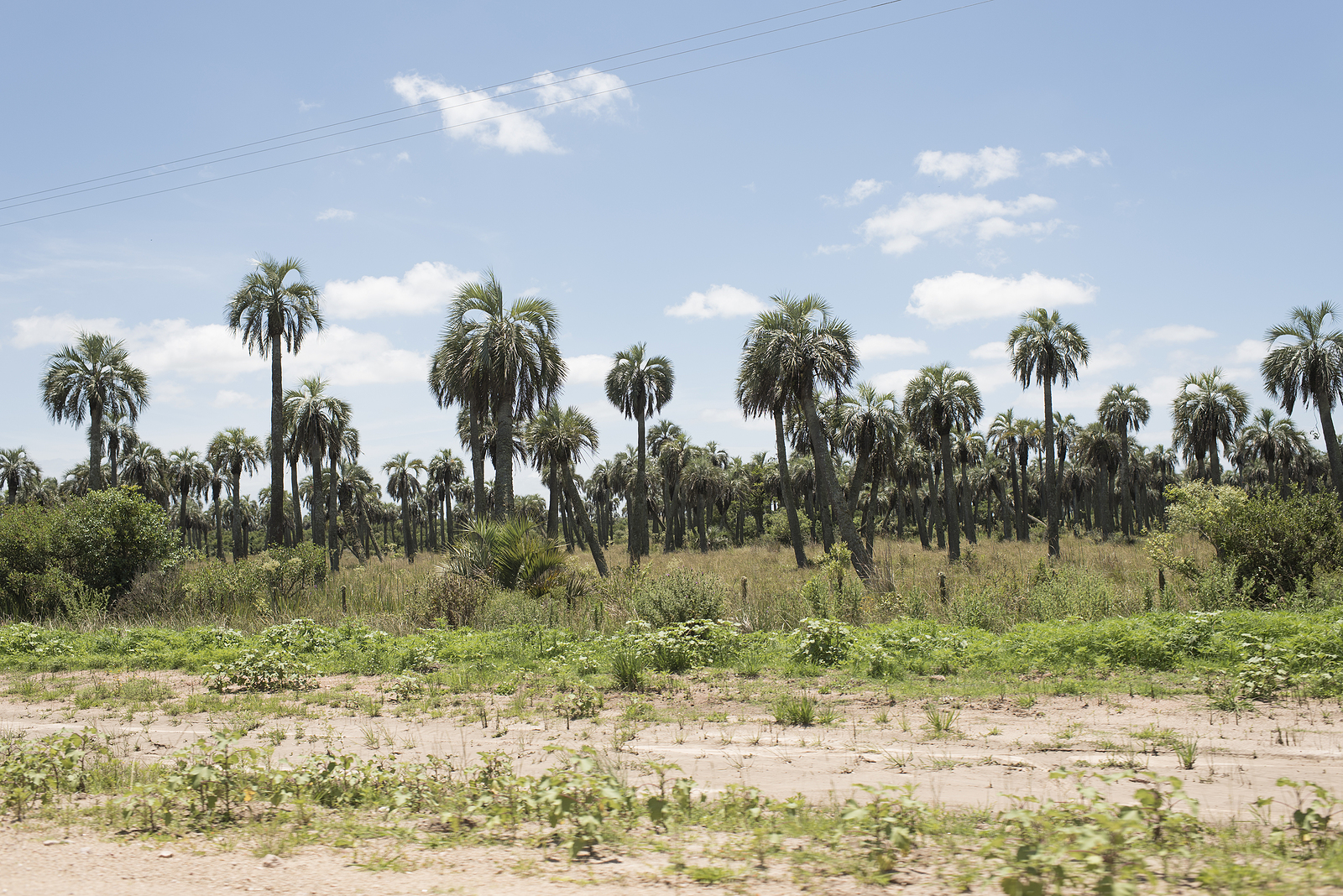 Butia capitata (Pindo palm). A palm with a stout trunk slowly growing from 10 to 20 feet tall. Distinctive gray feather-like fronds recurve back toward the trunk; bases of old fronds persist until cut. Attractive golden-yellow flowers occur in spring; edible fruit follows. Butia is tolerant of heat and cold to 15℉ (-9.4℃). Grow Butia as a featured plant or its striking foliage color and contrast amount other plants. Grow Butia in arid coastal, inland, valley, and intermediate and low desert habitats. Zones 8-10.
Butia capitata (Pindo palm). A palm with a stout trunk slowly growing from 10 to 20 feet tall. Distinctive gray feather-like fronds recurve back toward the trunk; bases of old fronds persist until cut. Attractive golden-yellow flowers occur in spring; edible fruit follows. Butia is tolerant of heat and cold to 15℉ (-9.4℃). Grow Butia as a featured plant or its striking foliage color and contrast amount other plants. Grow Butia in arid coastal, inland, valley, and intermediate and low desert habitats. Zones 8-10.
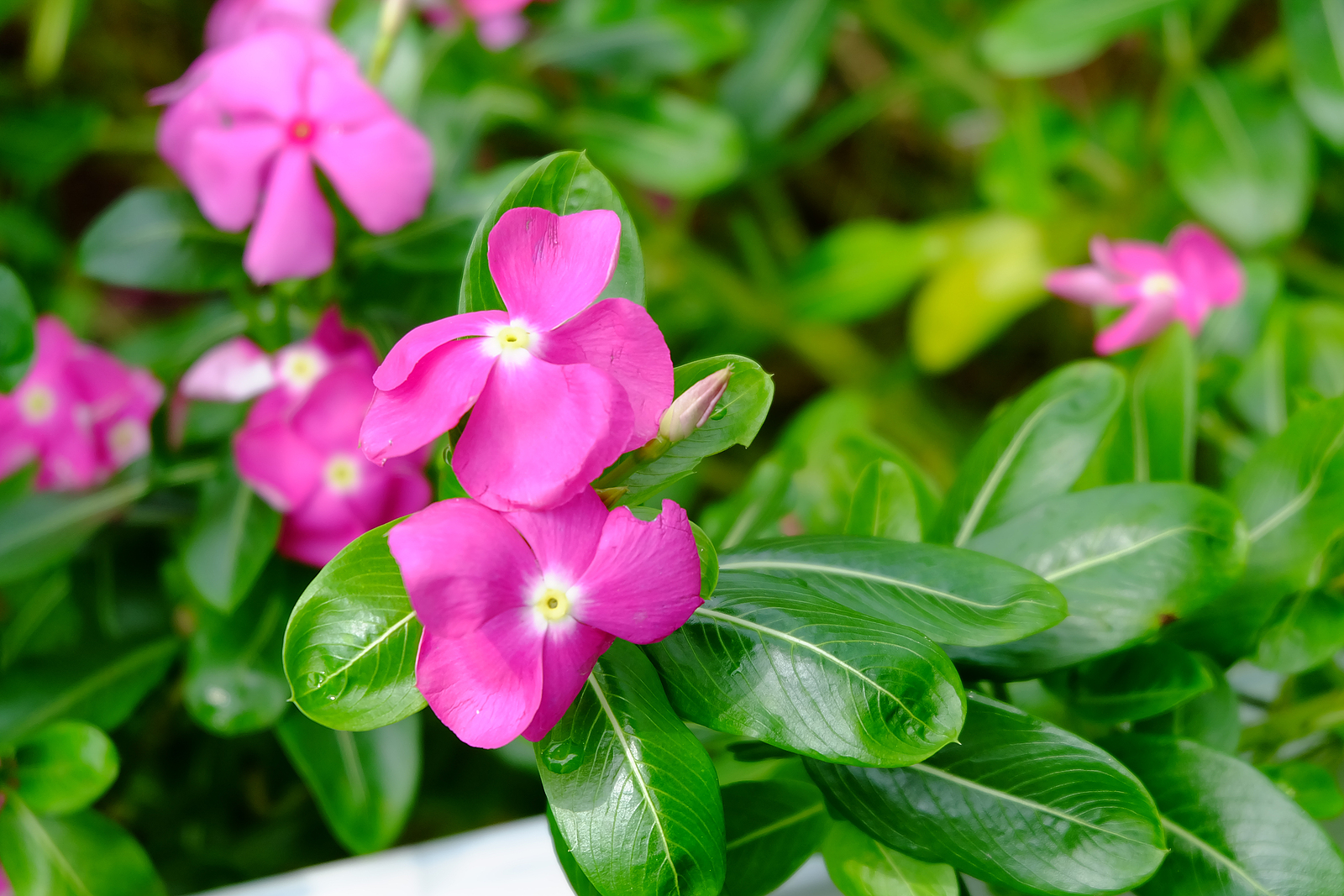 Catharanthus spp. (Annual vinca). This annual vinca is hard to beat for lots of carefree colors in hot, dry regions. It thrives in the summer heat. Blossoms’ colors include pink, magenta, salmon, and white as well as red, purple, and even close to blue. Catharanthus blooms from summer through fall. Gow as a perennial in Zones 9-11. Set out seedlings after all danger of frost has passed. Grow in well-drained soil, full sun, or light shade. Excellent choice for baskets, window boxes, and rock gardens.
Catharanthus spp. (Annual vinca). This annual vinca is hard to beat for lots of carefree colors in hot, dry regions. It thrives in the summer heat. Blossoms’ colors include pink, magenta, salmon, and white as well as red, purple, and even close to blue. Catharanthus blooms from summer through fall. Gow as a perennial in Zones 9-11. Set out seedlings after all danger of frost has passed. Grow in well-drained soil, full sun, or light shade. Excellent choice for baskets, window boxes, and rock gardens.
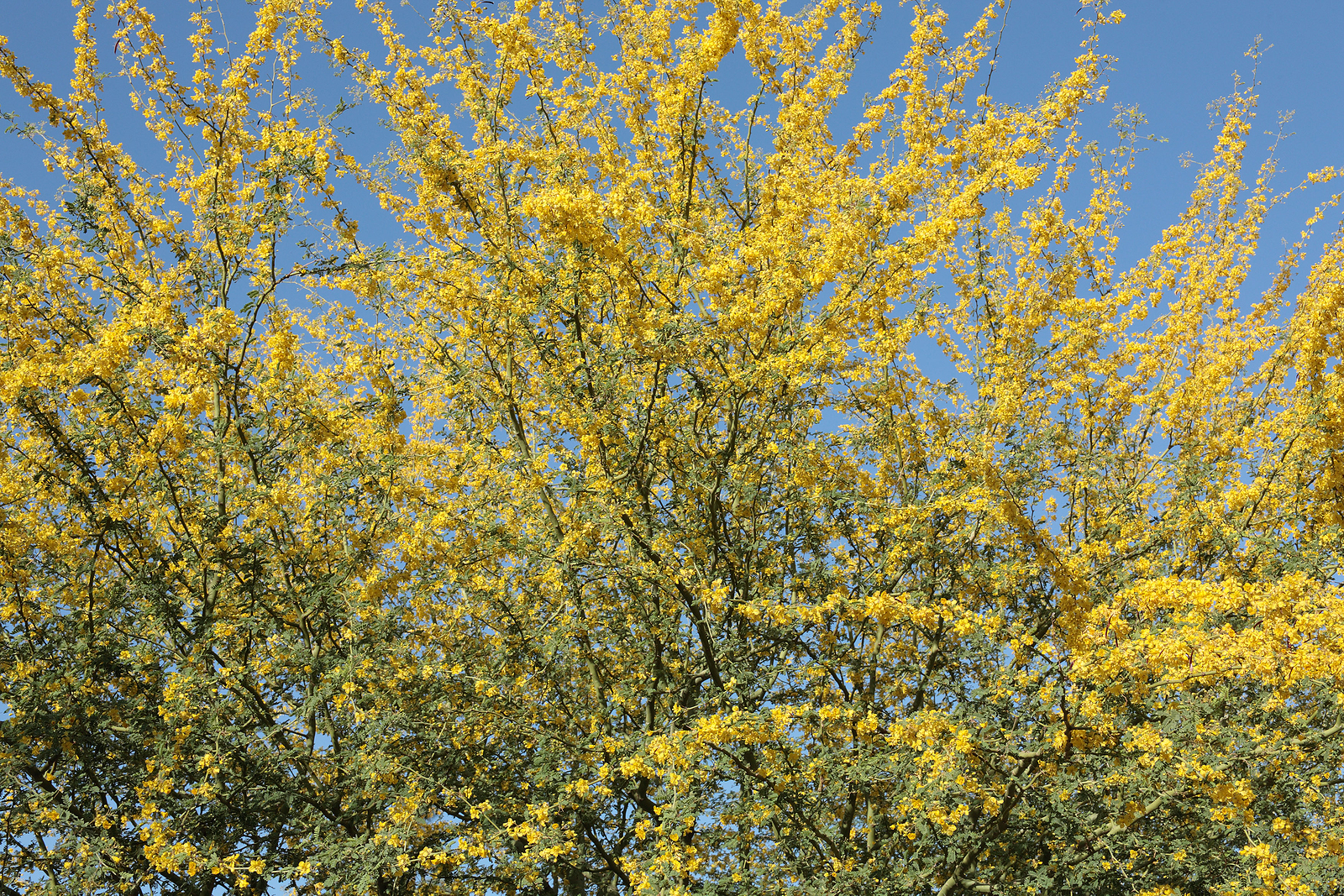 Cercidium texanum (Palo verde). Cercidium is a deciduous flowering tree that grows from 15 to 25 feet tall and nearly as wide. It will add color and shade to hot, arid landscapes and hillsides. It is a Xeriscaping favorite. Palo Verde is Spanish for “green tree”; this tree sports unusual smooth green bark. It also features clusters of yellow spring flowers. Grow Cercidium in full sun in alkaline well-drained soil. Zones 9-10.
Cercidium texanum (Palo verde). Cercidium is a deciduous flowering tree that grows from 15 to 25 feet tall and nearly as wide. It will add color and shade to hot, arid landscapes and hillsides. It is a Xeriscaping favorite. Palo Verde is Spanish for “green tree”; this tree sports unusual smooth green bark. It also features clusters of yellow spring flowers. Grow Cercidium in full sun in alkaline well-drained soil. Zones 9-10.
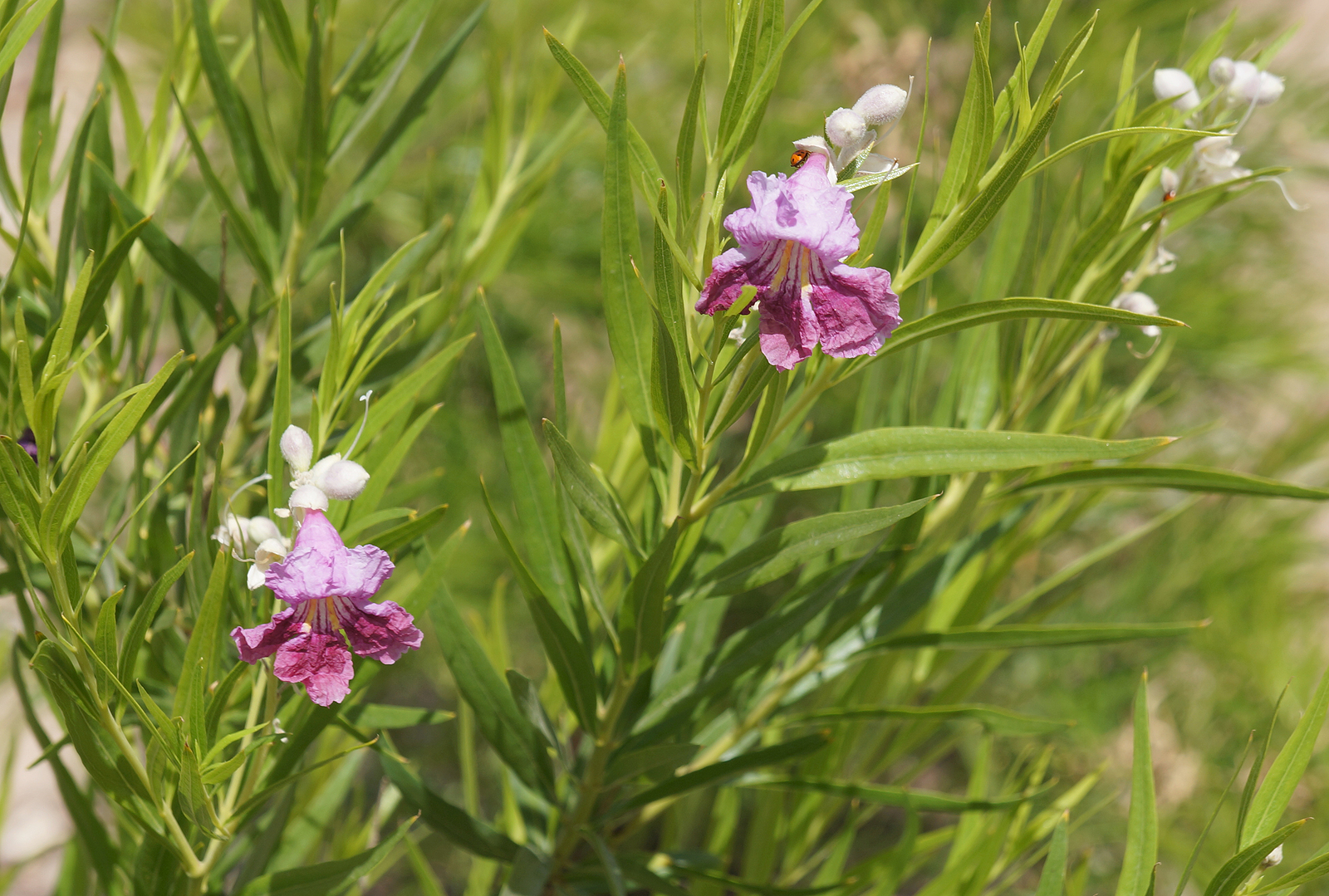 Chilopsis linearis (Desert willow). Chiliopsis is a large deciduous shrub to medium size tree with low spreading branches, ranging from 15 to 40 feet in height and spread. Foliage produces light to moderate shade with narrow linear leaves. Colorful trumpet-shaped flowers are white, pink, or purple with purple and yellow throat markings. Chiliopsis is native to high and low desert regions from southern California to Texas and south into Mexico. It is highly adaptable tolerating heat, the cold, wind, and summer drought. Zones 8-9.
Chilopsis linearis (Desert willow). Chiliopsis is a large deciduous shrub to medium size tree with low spreading branches, ranging from 15 to 40 feet in height and spread. Foliage produces light to moderate shade with narrow linear leaves. Colorful trumpet-shaped flowers are white, pink, or purple with purple and yellow throat markings. Chiliopsis is native to high and low desert regions from southern California to Texas and south into Mexico. It is highly adaptable tolerating heat, the cold, wind, and summer drought. Zones 8-9.
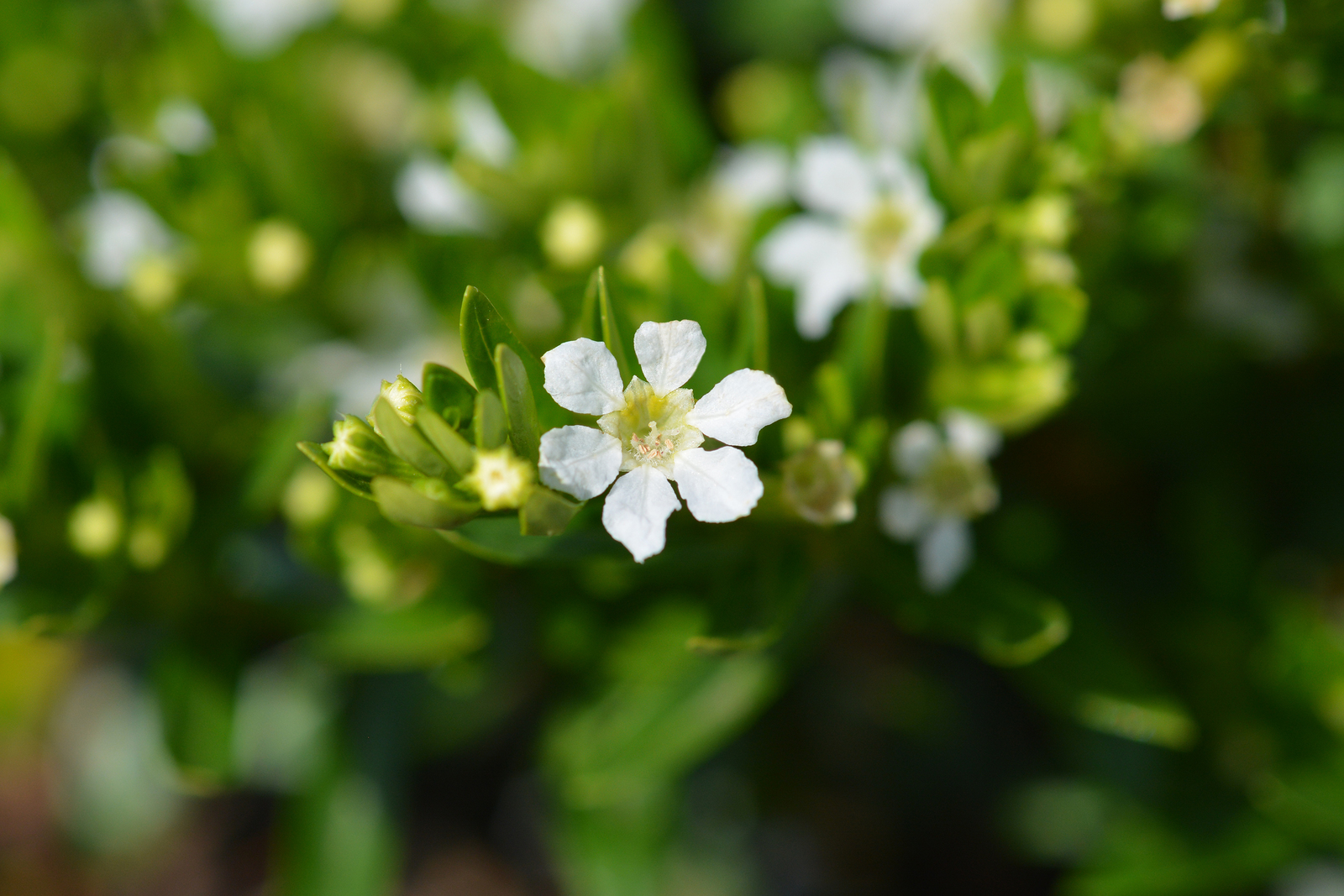 Cuphea hyssopifolia (Mexican false heather). This Cuphea comes from a genus of more than 250 species. It is a fine-textured shrub with petite features, growing 1 to 2 feet tall and 2 to 3 feet wide. Tiny bright green leaves grow in pairs on stems; colorful white to magenta flowers are profused in spring and almost always presents. Plant this Cupea in borders, mixed plantings, or in containers. Grows best in warm, frost-free climates in well-drained, loamy soils. They grow quickly and are easily pruned to renew character. Zones 10-11.
Cuphea hyssopifolia (Mexican false heather). This Cuphea comes from a genus of more than 250 species. It is a fine-textured shrub with petite features, growing 1 to 2 feet tall and 2 to 3 feet wide. Tiny bright green leaves grow in pairs on stems; colorful white to magenta flowers are profused in spring and almost always presents. Plant this Cupea in borders, mixed plantings, or in containers. Grows best in warm, frost-free climates in well-drained, loamy soils. They grow quickly and are easily pruned to renew character. Zones 10-11.
 Cupressus arizonica (Arizona cypress). The Arizona cypress is a medium to a large evergreen tree, growing 35 to 50 feet tall. This tree has pale blue-green to yellowish, scale-like leaves; coarsely shredded red-brown ark covers mature trunks and branches. This species is native to gravelly slopes, mountain canyons, and well-drained soil through the arid climate zones of New Mexico, Arizona, California, and Mexico. It is well-suited to desert areas. It is tolerant of cold, drought, heat, and wind. Zones 7-9.
Cupressus arizonica (Arizona cypress). The Arizona cypress is a medium to a large evergreen tree, growing 35 to 50 feet tall. This tree has pale blue-green to yellowish, scale-like leaves; coarsely shredded red-brown ark covers mature trunks and branches. This species is native to gravelly slopes, mountain canyons, and well-drained soil through the arid climate zones of New Mexico, Arizona, California, and Mexico. It is well-suited to desert areas. It is tolerant of cold, drought, heat, and wind. Zones 7-9.
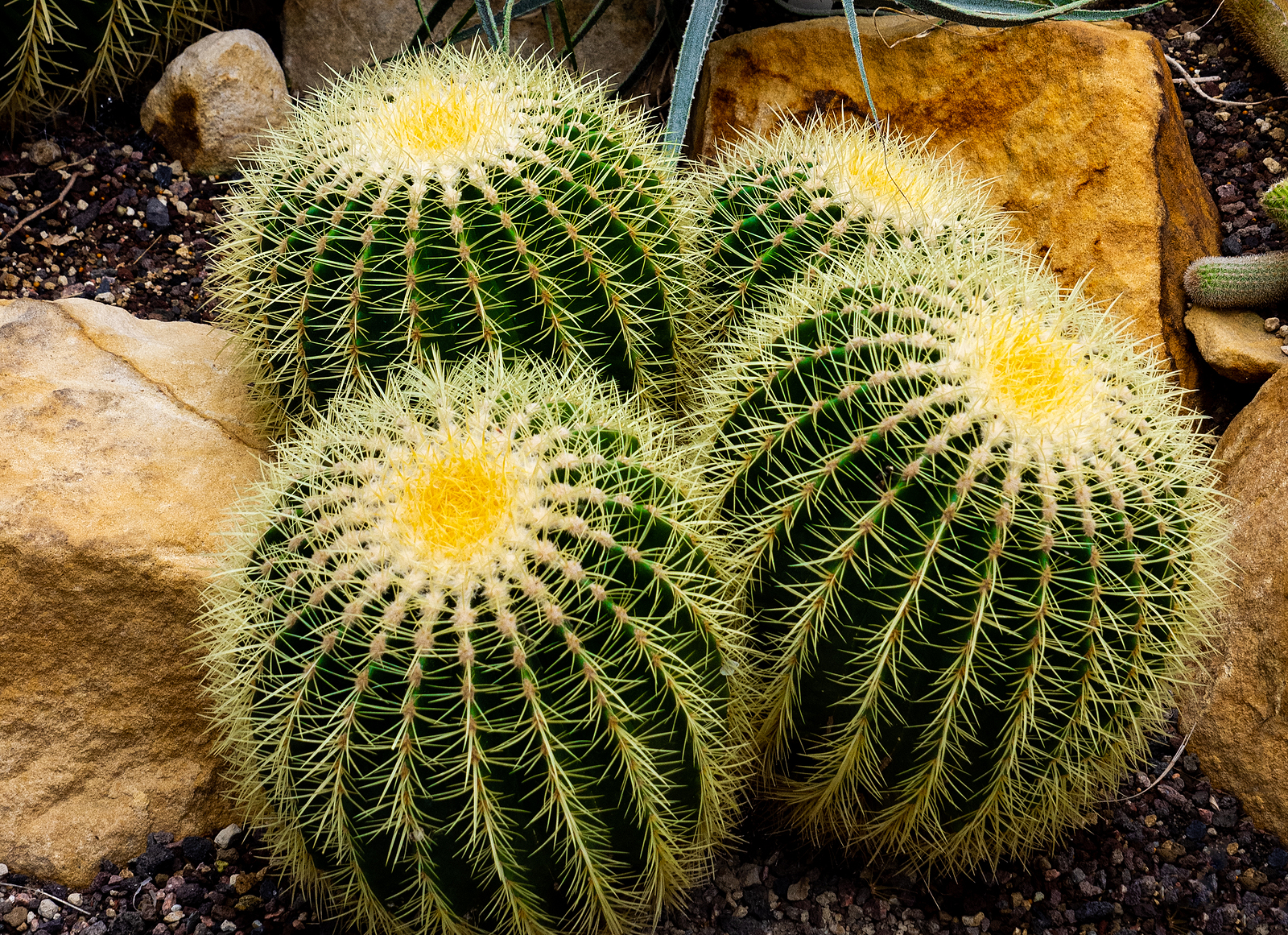 Echinocactus grusonii ( Golden barrel cactus ). Golden barrel cactus is characterized by 20 to 40 pronounced vertical ribs and colorful blond to golden-colored spines. It has a distinctive spherical shape and reaches 18 to 30 inches in diameter. golden barrel cactus is native to central Mexico where it is well adapted to warm and sunny climate conditions and periods of extended drought. It needs good soil drainage to avoid rotting. It does not like frost. It will thrive in low deserts and inland in warm climate zones. Zones 8-11.
Echinocactus grusonii ( Golden barrel cactus ). Golden barrel cactus is characterized by 20 to 40 pronounced vertical ribs and colorful blond to golden-colored spines. It has a distinctive spherical shape and reaches 18 to 30 inches in diameter. golden barrel cactus is native to central Mexico where it is well adapted to warm and sunny climate conditions and periods of extended drought. It needs good soil drainage to avoid rotting. It does not like frost. It will thrive in low deserts and inland in warm climate zones. Zones 8-11.
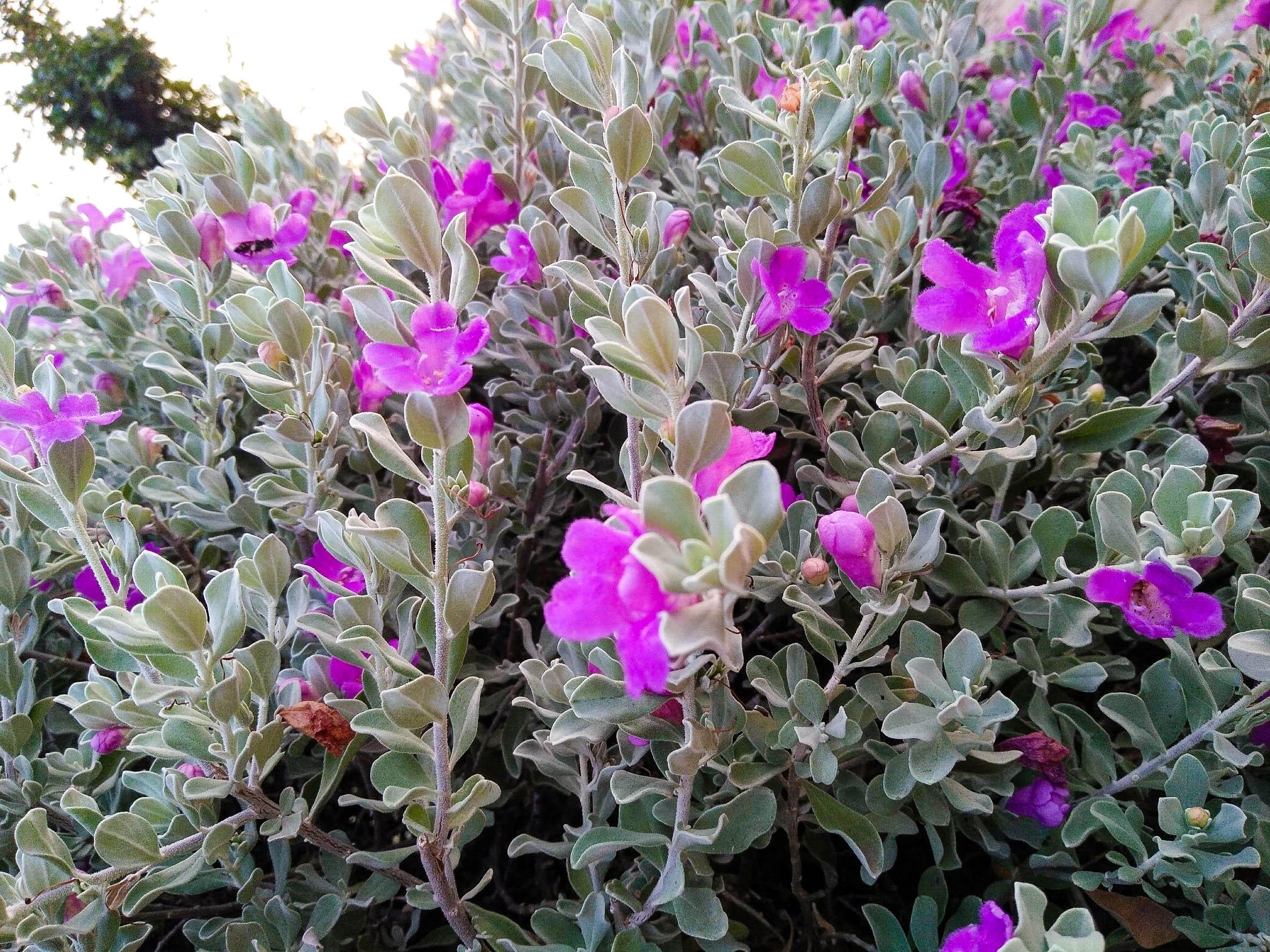 Leucophyllum frutescens (Texas ranger). Leucophyllum is an evergreen shrub noted for its bright flowers, durable foliage, and tolerance of heat, cold, aridity, and drought. It grows well in limestone soil and can tolerate alkaline conditions. Leucophyllum can tolerate sun and heat to 110℉ (43℃) and cold to 10℉ (-12℃). It grows well in low and intermediate desert regions. They often have more than one flowering period each year in response to cycles of high humidity or seasonal rains and irrigation. Zones 8-10.
Leucophyllum frutescens (Texas ranger). Leucophyllum is an evergreen shrub noted for its bright flowers, durable foliage, and tolerance of heat, cold, aridity, and drought. It grows well in limestone soil and can tolerate alkaline conditions. Leucophyllum can tolerate sun and heat to 110℉ (43℃) and cold to 10℉ (-12℃). It grows well in low and intermediate desert regions. They often have more than one flowering period each year in response to cycles of high humidity or seasonal rains and irrigation. Zones 8-10.
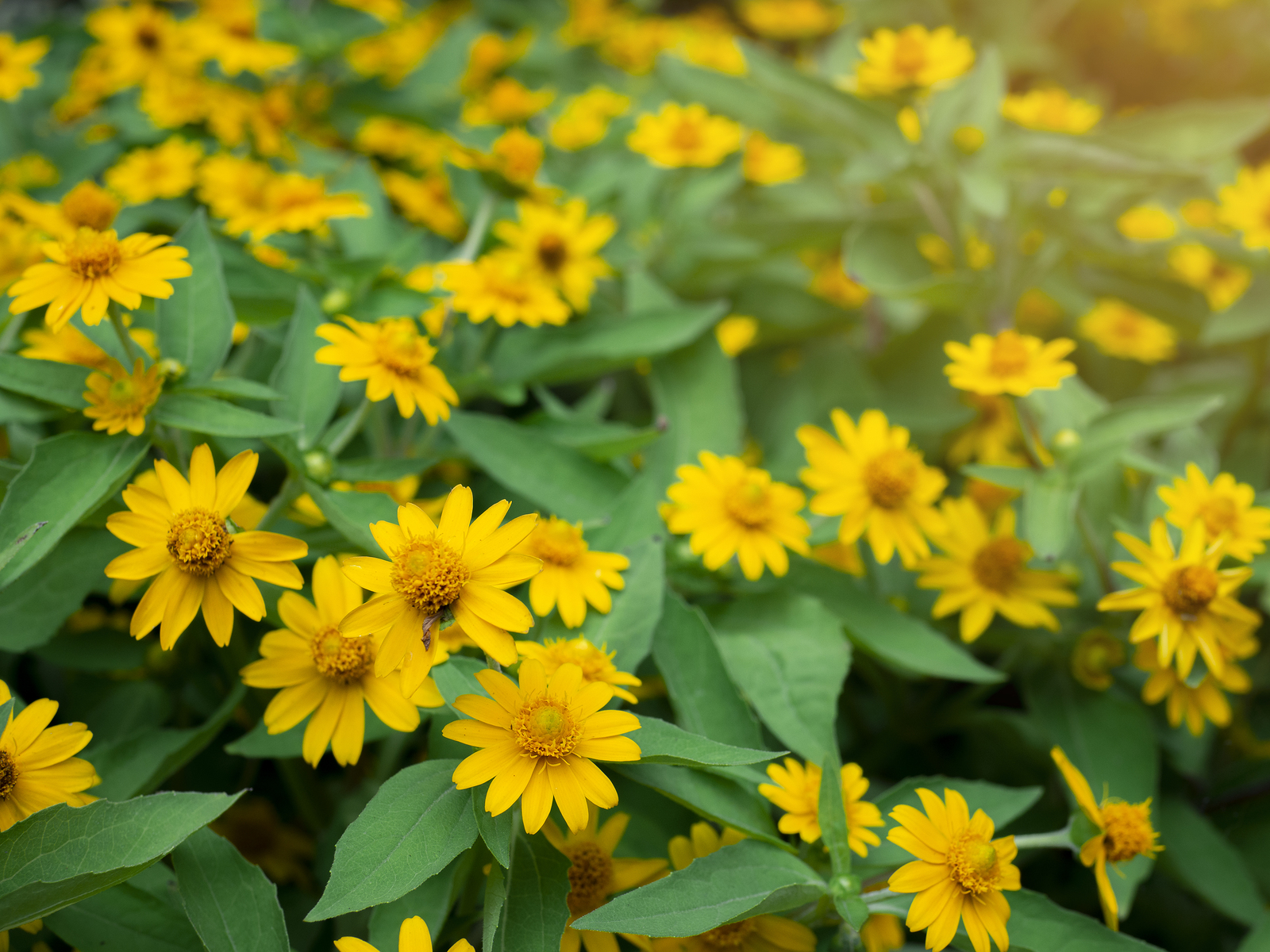 Melampodium spp. (Butter daisy). Melampodium–commonly called butter daisy–is a tough, low-growing annual covered with brilliant gold-medallion daisies throughout the summer. Melampodium can withstand heat, humidity, and drought. It grows 10 to 14 inches tall and wide. It can be planted in average to poor soil. This plant does not require deadheading to keep on blooming until frost arrives. Zones 3-9.
Melampodium spp. (Butter daisy). Melampodium–commonly called butter daisy–is a tough, low-growing annual covered with brilliant gold-medallion daisies throughout the summer. Melampodium can withstand heat, humidity, and drought. It grows 10 to 14 inches tall and wide. It can be planted in average to poor soil. This plant does not require deadheading to keep on blooming until frost arrives. Zones 3-9.
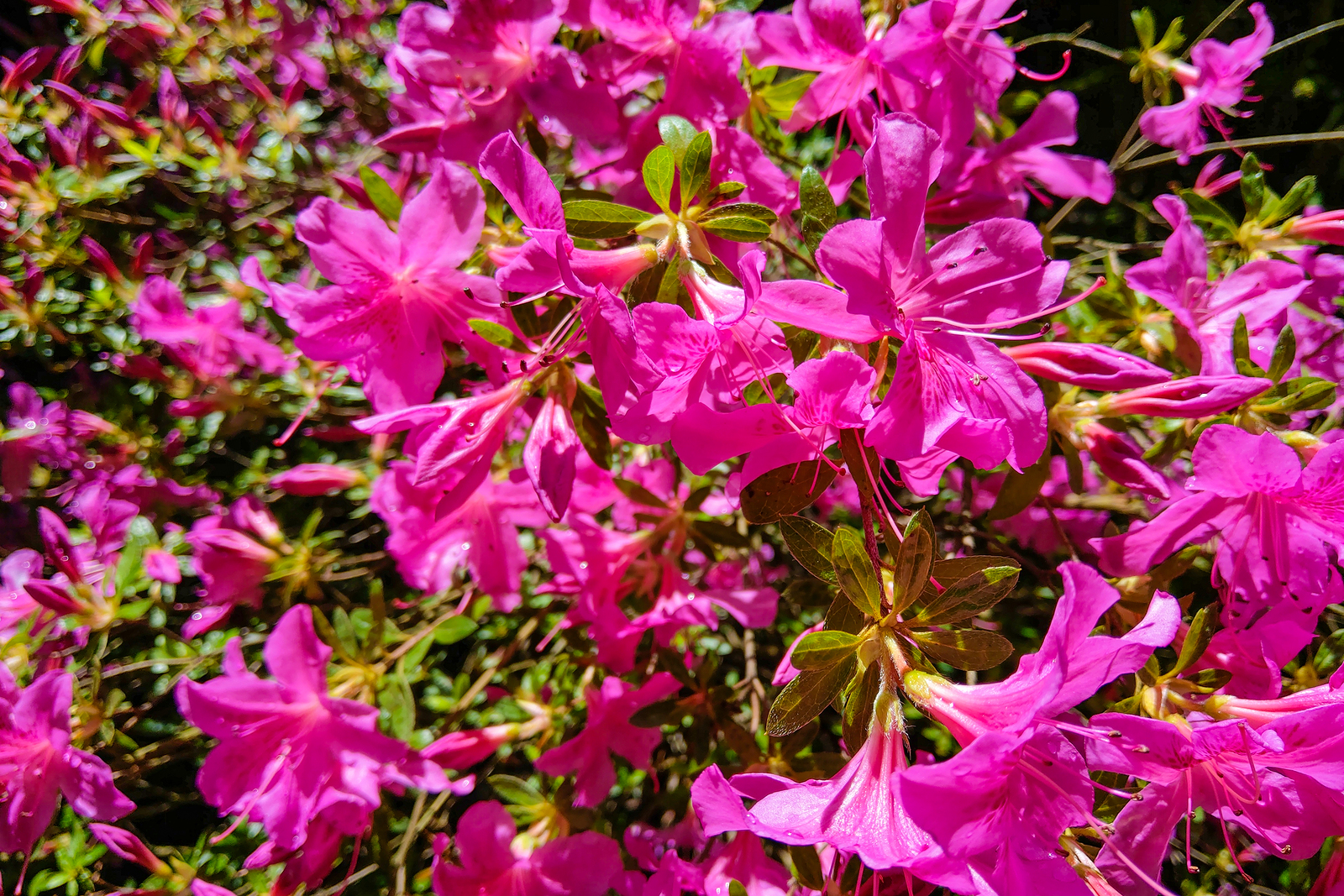 Mirabilis jalapa (Four-O-Clock). Mirabilis is an annual loaded with multi-colored, fragrant flowers that open in the late afternoon (four-o-clock) and into the evening. The scented, trumpet-shaped flowers come in white, red, yellow, pink, orange, and bicolor, sometimes with many different colors on the same plant. Mirabilis is native to dry, open habitats in the Southwestern United States and Central and South America. Plant them in full sun in well-drained soil. They will grow as perennials in frost-free regions. Zones 8-11.
Mirabilis jalapa (Four-O-Clock). Mirabilis is an annual loaded with multi-colored, fragrant flowers that open in the late afternoon (four-o-clock) and into the evening. The scented, trumpet-shaped flowers come in white, red, yellow, pink, orange, and bicolor, sometimes with many different colors on the same plant. Mirabilis is native to dry, open habitats in the Southwestern United States and Central and South America. Plant them in full sun in well-drained soil. They will grow as perennials in frost-free regions. Zones 8-11.
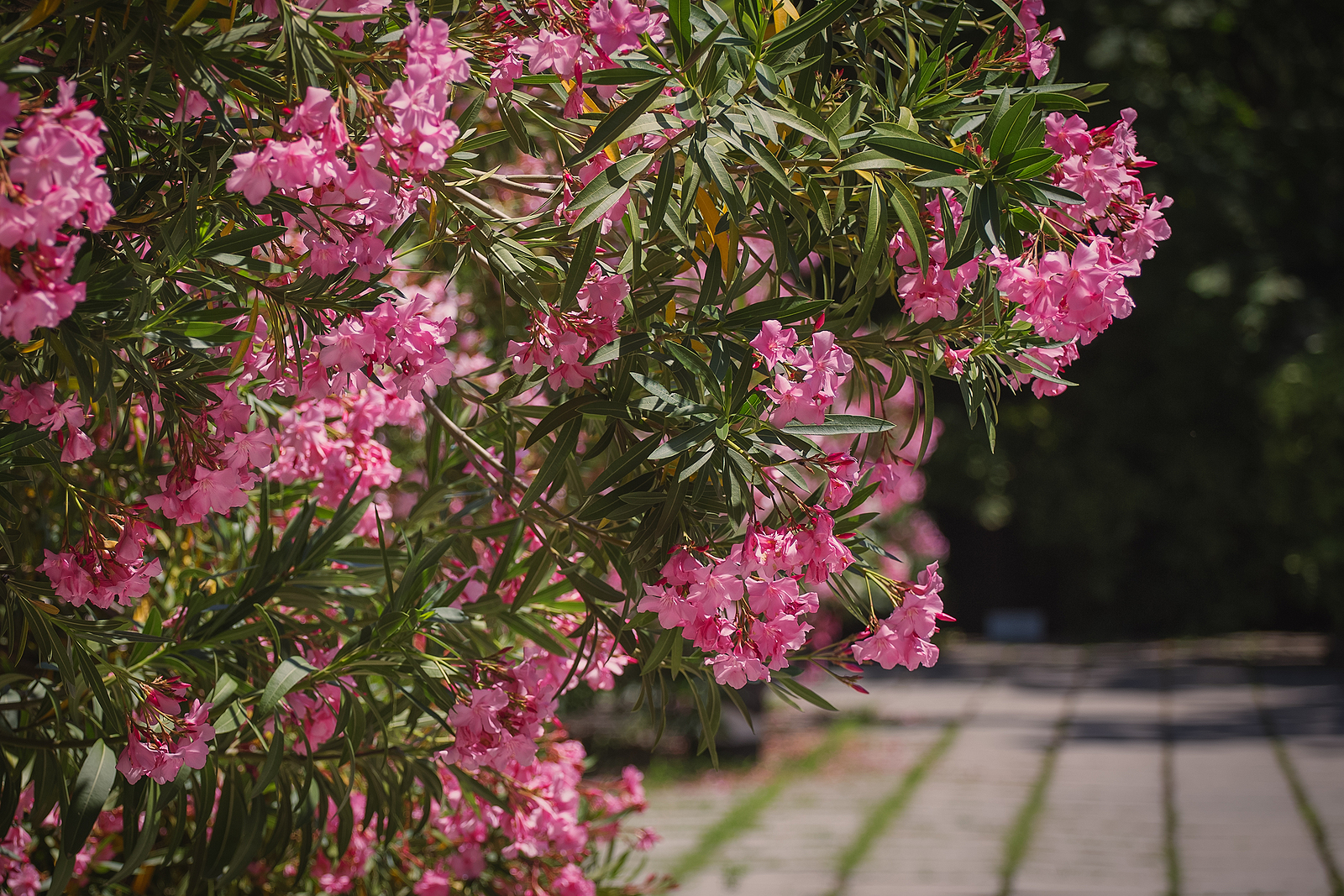 Nerium oleander (Oleander). Nerium is an evergreen shrub that grows from 8 to 12 feet tall and bears showy white to pink, red, salmon, and yellow flowers from mid-spring through summer. Nerium is native to many parts of the Mediterranean region, from Spain and North Africa to Greece. It tolerates heat, aridity, sun, wind, and extended periods of drought. It tolerates most soils including calcareous, sandy, and light saline. Nerium is often planted on slopes, for hedges and screens, and in roadside plantings. Zones 8-10.
Nerium oleander (Oleander). Nerium is an evergreen shrub that grows from 8 to 12 feet tall and bears showy white to pink, red, salmon, and yellow flowers from mid-spring through summer. Nerium is native to many parts of the Mediterranean region, from Spain and North Africa to Greece. It tolerates heat, aridity, sun, wind, and extended periods of drought. It tolerates most soils including calcareous, sandy, and light saline. Nerium is often planted on slopes, for hedges and screens, and in roadside plantings. Zones 8-10.
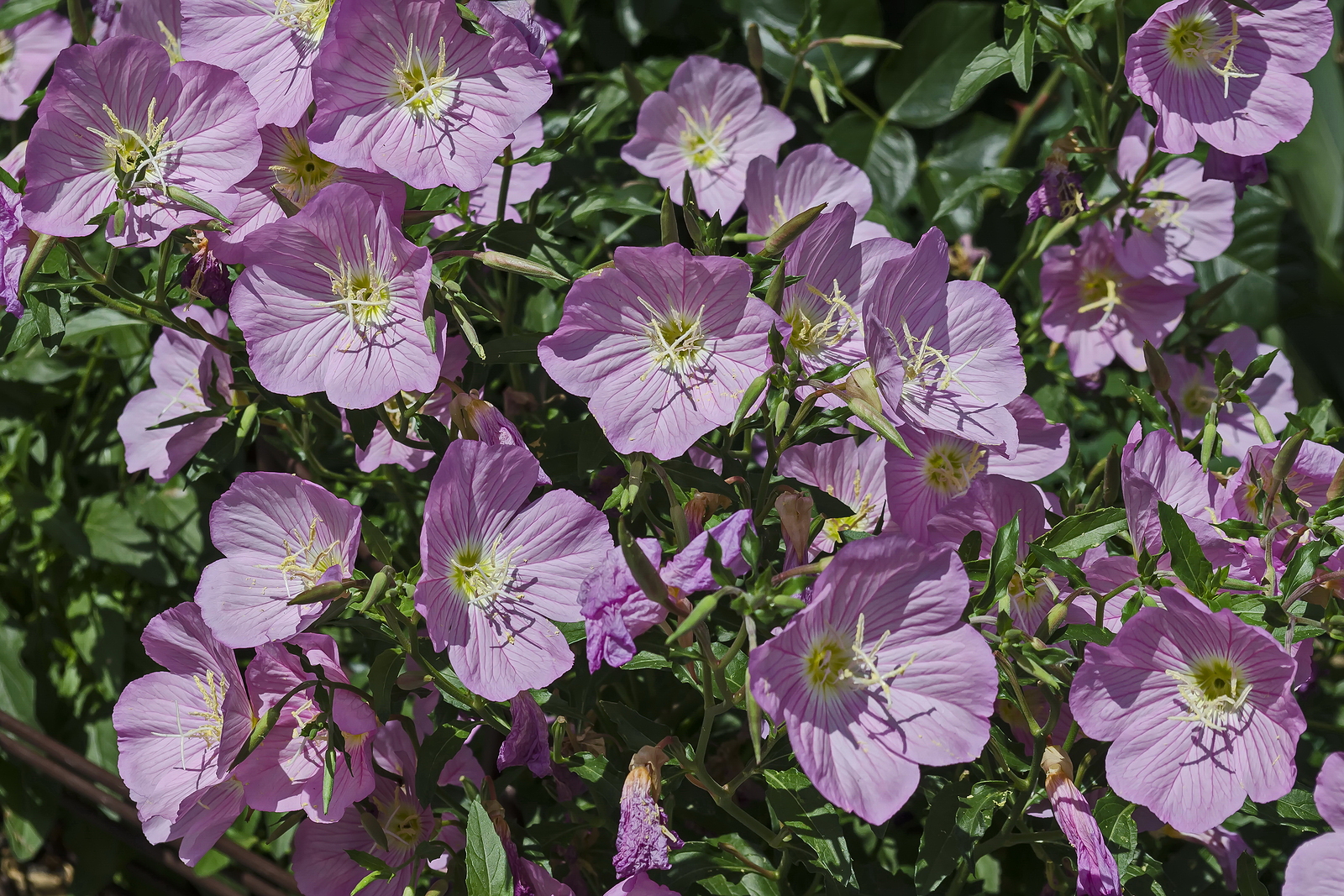 Oenothera speciosa (Evening primrose). Oenothera is a fast-growing perennial with a spreading habit growing 10 to 12 inches tall and 2 to 3 feet wide. It bears medium green leaves and striking light pink flowers with yellow centers. Flowers cover the plant in spring and occur intermittently until fall. Oenothera is native to the southwestern United States and Mexico. It is widely used along borders, in rock gardens, and in containers. It does best in well-drained soil. Zones 3-9.
Oenothera speciosa (Evening primrose). Oenothera is a fast-growing perennial with a spreading habit growing 10 to 12 inches tall and 2 to 3 feet wide. It bears medium green leaves and striking light pink flowers with yellow centers. Flowers cover the plant in spring and occur intermittently until fall. Oenothera is native to the southwestern United States and Mexico. It is widely used along borders, in rock gardens, and in containers. It does best in well-drained soil. Zones 3-9.
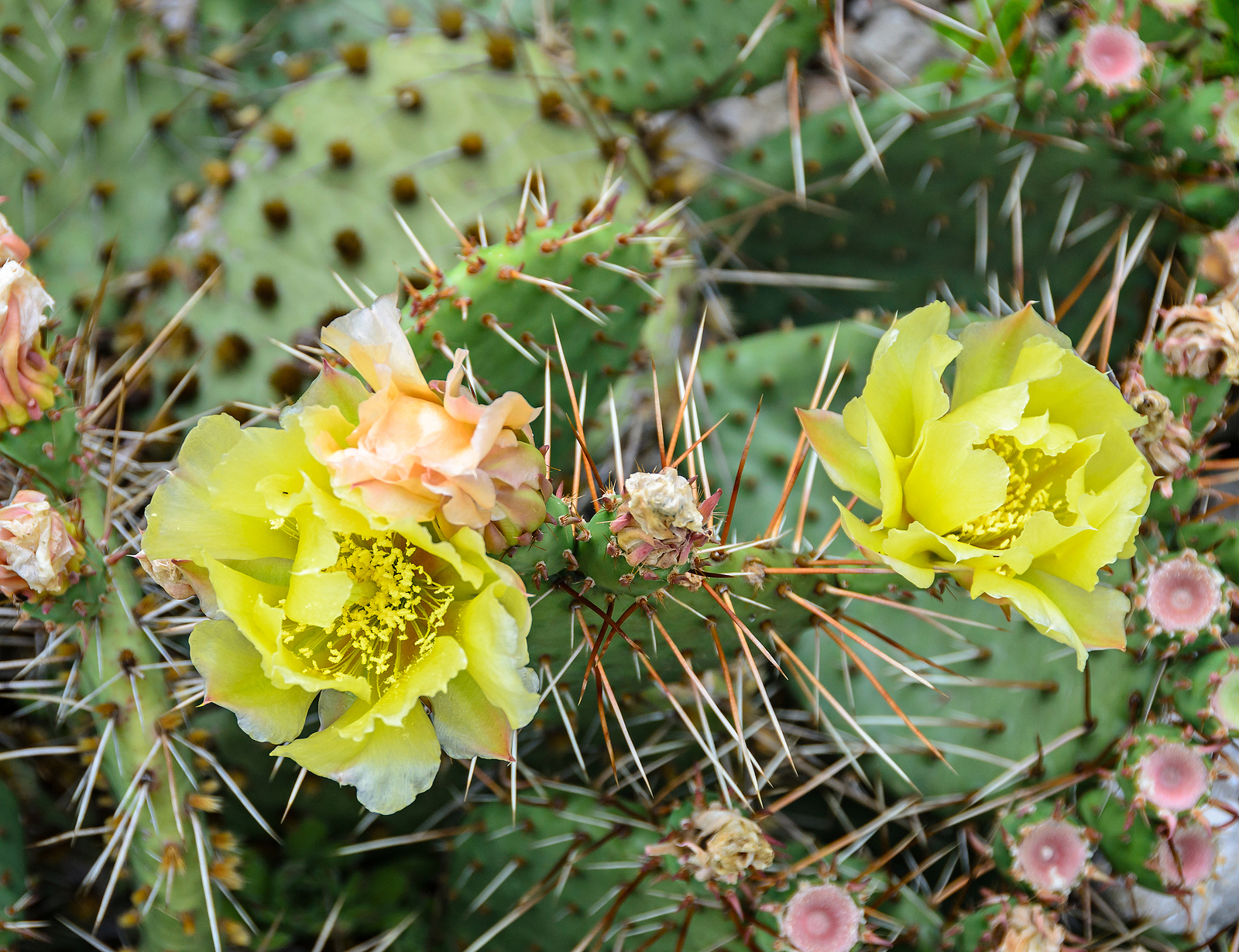 Opuntia spp. (Bunny ears; prickly pear cactus). Opuntia is a genus of succulent plants including more than 300 species. Most types do not have leaves, instead, they produce fleshy stems and pads that can be cylindrical or flattened in shape. There is a great diversity in size, shapes, and spines among Optunia. They grow best in full sun and well-drained soil. Optunias can be used in desert-style gardens where they can be placed around rocks and grown in containers. Growing zones depend on the variety.
Opuntia spp. (Bunny ears; prickly pear cactus). Opuntia is a genus of succulent plants including more than 300 species. Most types do not have leaves, instead, they produce fleshy stems and pads that can be cylindrical or flattened in shape. There is a great diversity in size, shapes, and spines among Optunia. They grow best in full sun and well-drained soil. Optunias can be used in desert-style gardens where they can be placed around rocks and grown in containers. Growing zones depend on the variety.
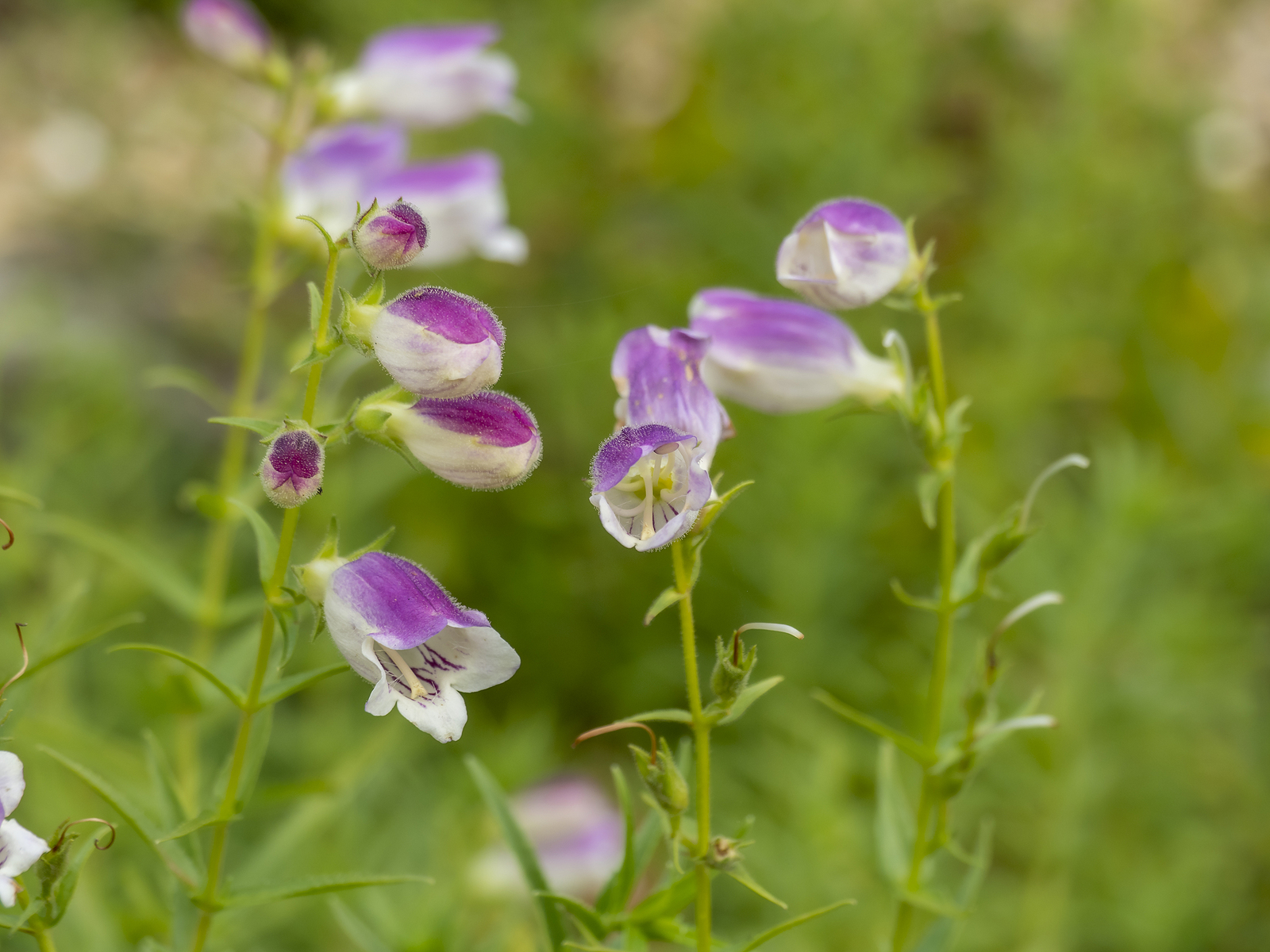 Penstemon spp. (Penstemon). Penstemon is one of the largest groups of flowering perennial plants in North America, including at least 250 species. Known for their colorful tubular flowers, they are top nectar plants for hummingbirds, butterflies, and bees. Flower colors vary from white, pink, red, to yellow and blue. Penstemons are adapted to dry climate conditions and do best in well-drained soils. They can be displayed with great effect around rocks, along borders, and in perennial gardens. Zones 3-8.
Penstemon spp. (Penstemon). Penstemon is one of the largest groups of flowering perennial plants in North America, including at least 250 species. Known for their colorful tubular flowers, they are top nectar plants for hummingbirds, butterflies, and bees. Flower colors vary from white, pink, red, to yellow and blue. Penstemons are adapted to dry climate conditions and do best in well-drained soils. They can be displayed with great effect around rocks, along borders, and in perennial gardens. Zones 3-8.
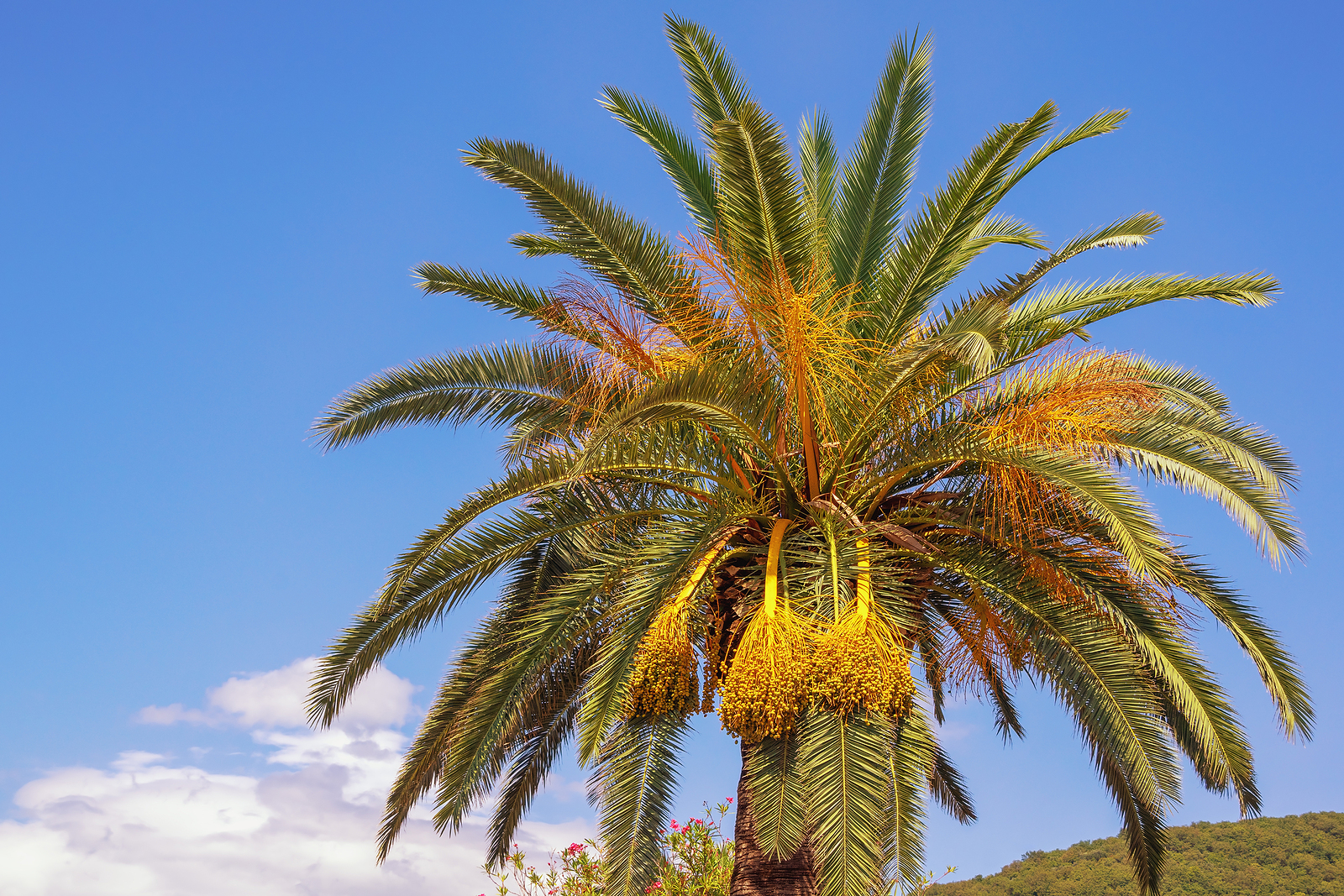 Phoenix spp. (Date palm). Phoenix are solitary or clumping palms with long feathery fronds. Fronds with pointed leaflets form a rounded and symmetrical crown. The fruit is colorful and edible when processed. There are about 18 species that vary in height from 8 feet tall to 60 feet tall and more. Some become large and stately trees. Phoenix does best in well-drained soil and full sun. Phoenix adapts to heat, wind, aridity, and sun. Phoneix is native to tropical, subtropical, and semi-arid regions of Africa, Aisa, and the Canary Islands. Zones 9-10.
Phoenix spp. (Date palm). Phoenix are solitary or clumping palms with long feathery fronds. Fronds with pointed leaflets form a rounded and symmetrical crown. The fruit is colorful and edible when processed. There are about 18 species that vary in height from 8 feet tall to 60 feet tall and more. Some become large and stately trees. Phoenix does best in well-drained soil and full sun. Phoenix adapts to heat, wind, aridity, and sun. Phoneix is native to tropical, subtropical, and semi-arid regions of Africa, Aisa, and the Canary Islands. Zones 9-10.
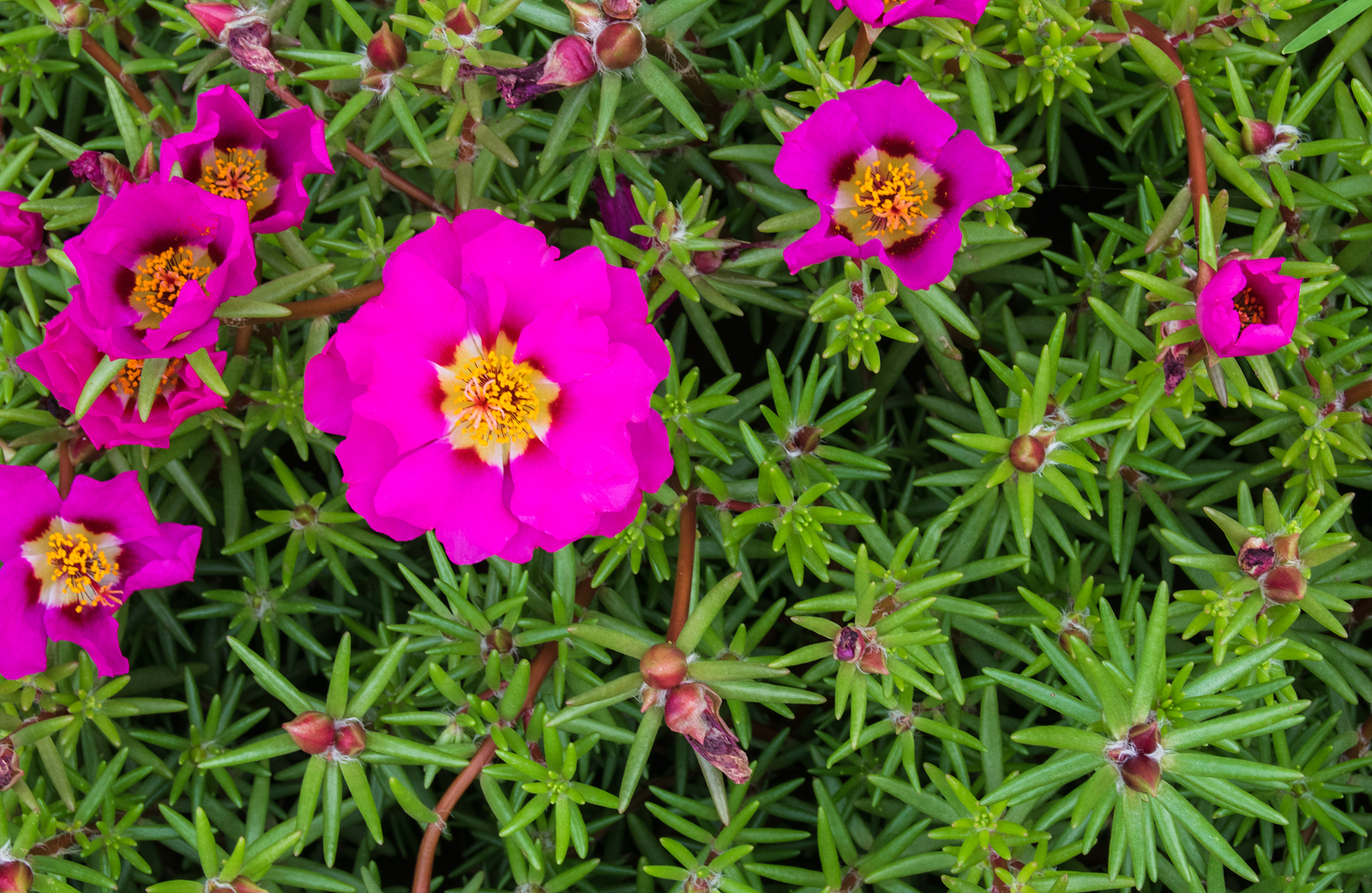 Portulaca grandiflora (Moss rose). Portulaca is spreading annual that grows 4 to 8 inches tall. The showy, satiny-looking flowers can be single or double. Portulaca comes in an array of bright colors, including hot pink, red, purple, yellow, and white. The flowers normally open only on sunny days. Portulaca is tough and easy to grow. They thrive in full sun and poor, well-drained soil. They grow well in sandy, dry conditions. Portulaca is an annual in all zones.
Portulaca grandiflora (Moss rose). Portulaca is spreading annual that grows 4 to 8 inches tall. The showy, satiny-looking flowers can be single or double. Portulaca comes in an array of bright colors, including hot pink, red, purple, yellow, and white. The flowers normally open only on sunny days. Portulaca is tough and easy to grow. They thrive in full sun and poor, well-drained soil. They grow well in sandy, dry conditions. Portulaca is an annual in all zones.
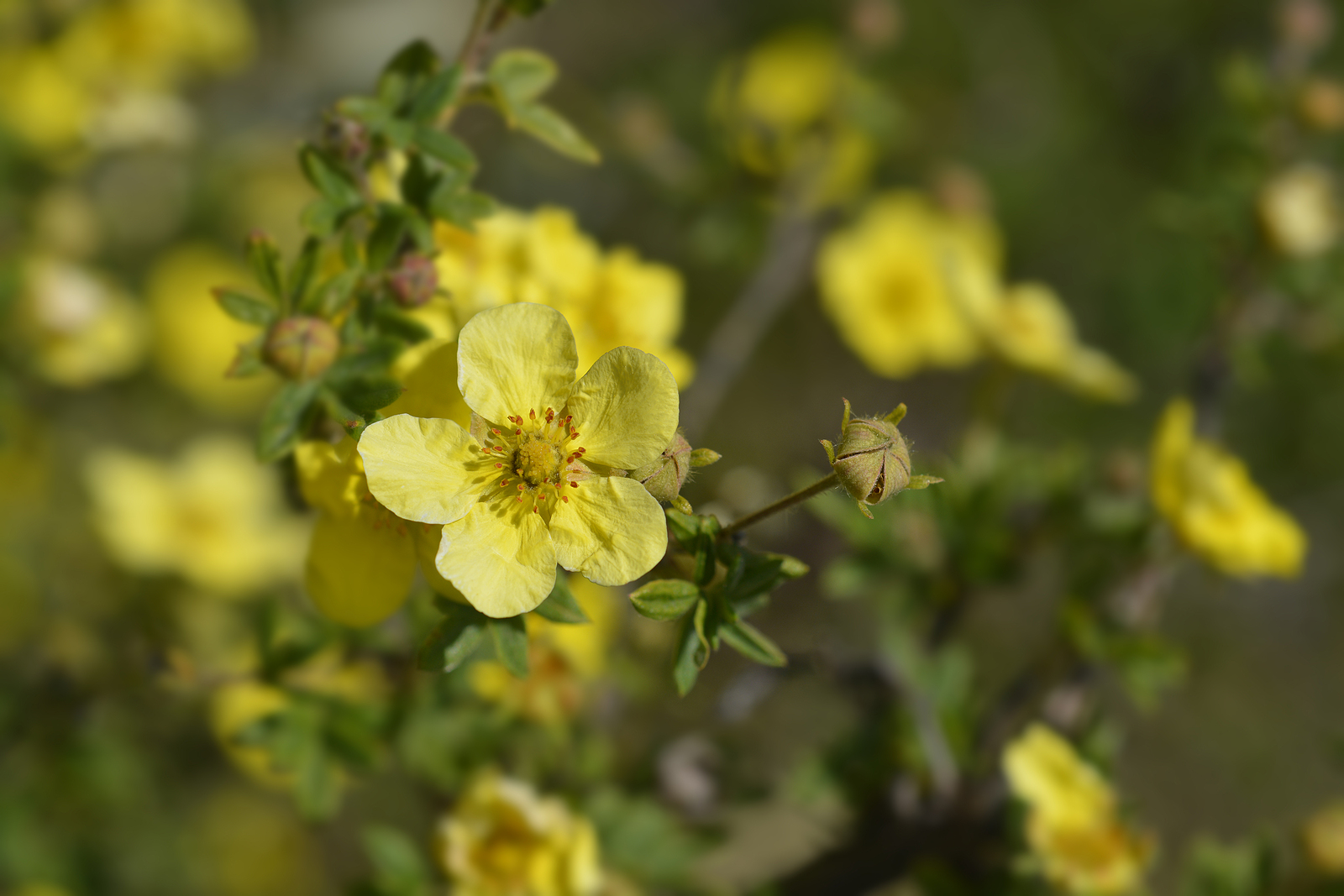 Potentilla fruticosa (Shrubby Cinquefoil). Potentilla is a deciduous shrub that can grow to 4 feet or more. Pinnate leaves have five to seven oblong leaflets. Saucer-shaped flowers are 1-inch wide and bright yellow. Blooms are borne over a long season from spring or early summer to fall. Potentilla can be grown in poor to moderately rich, well-drained soil. Potentilla flowers best in full sun. Potentilla is cold tolerant and can withstand below-freezing temperatures. Plant Potentilla in low hedges, shrub border, and around foundations. Zones 2-7.
Potentilla fruticosa (Shrubby Cinquefoil). Potentilla is a deciduous shrub that can grow to 4 feet or more. Pinnate leaves have five to seven oblong leaflets. Saucer-shaped flowers are 1-inch wide and bright yellow. Blooms are borne over a long season from spring or early summer to fall. Potentilla can be grown in poor to moderately rich, well-drained soil. Potentilla flowers best in full sun. Potentilla is cold tolerant and can withstand below-freezing temperatures. Plant Potentilla in low hedges, shrub border, and around foundations. Zones 2-7.
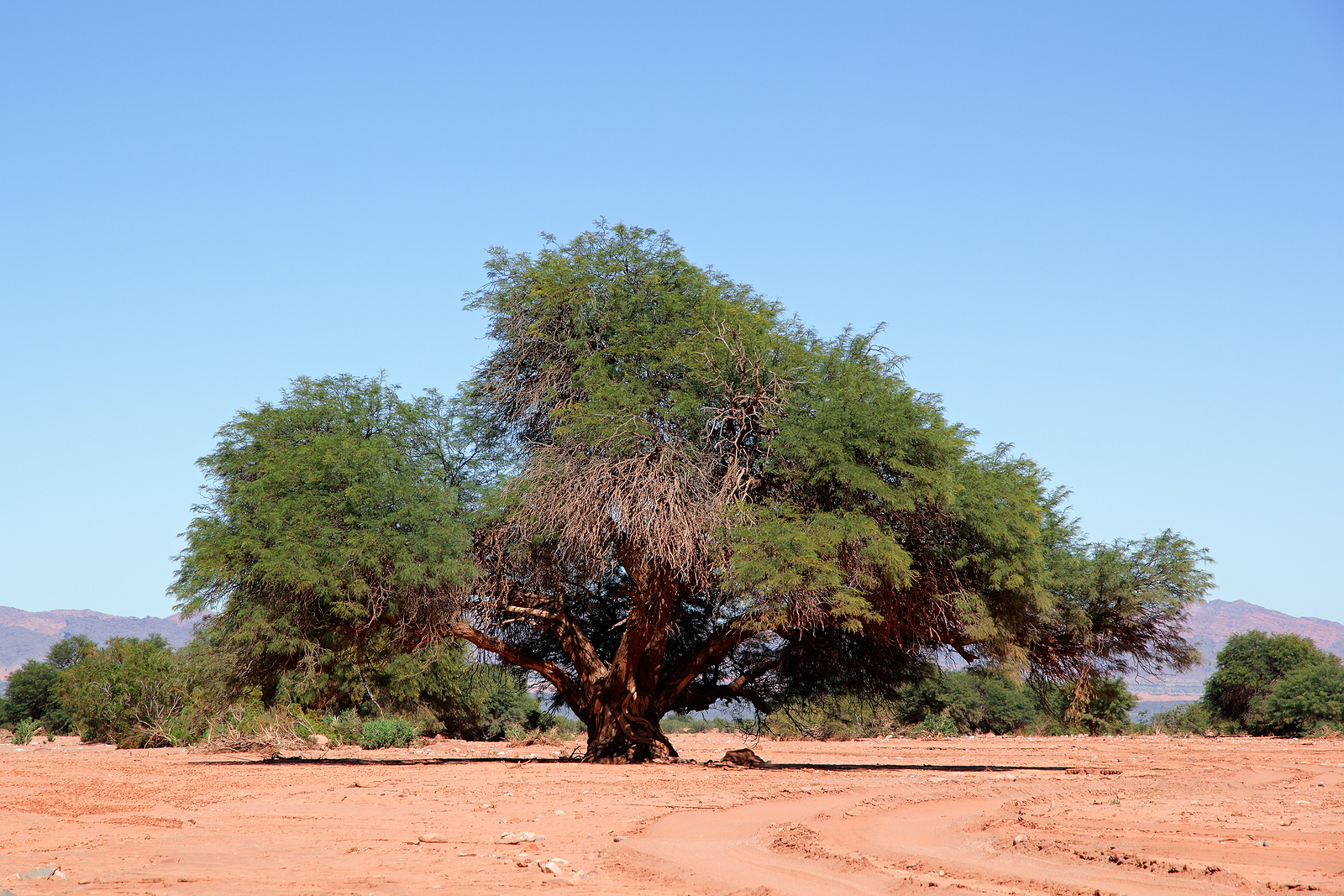 Prosopis spp. (Mesquite) Prosopis are large shrubs and small trees widely distributed through the arid southwest, particularly in Arizona, California, Texas, and Mexico. They are evergreen with a tendency to become deciduous during cold winters. Leaves are bipinnately divided with numerous pairs of feathery leaflets. Tiny flowers are creamy-yellow. Prosopis is well adapted to sun, heat, and extended periods of drought. They are often used as shade trees in intermediate and low deserts. Zones 10-11.
Prosopis spp. (Mesquite) Prosopis are large shrubs and small trees widely distributed through the arid southwest, particularly in Arizona, California, Texas, and Mexico. They are evergreen with a tendency to become deciduous during cold winters. Leaves are bipinnately divided with numerous pairs of feathery leaflets. Tiny flowers are creamy-yellow. Prosopis is well adapted to sun, heat, and extended periods of drought. They are often used as shade trees in intermediate and low deserts. Zones 10-11.
 Salvia spp. (Sages). Salvia is a very large genus of more than 900 species. Many have evolved within the Mediterranean and arid climate regions of Europe, southwestern United States, and Medico. Species with wrinkled and aromatic leaves are able to survive drught stress and hot climates. Salivias range in size from a foot or slightly more to 6 or more feet tall. Flower colors range from white to scarlet, pink, salmon, blue, and deep purple. Most provide nectar pollen, and seeds to birds, butterflies, and bees. Growing zones depend on the variety.
Salvia spp. (Sages). Salvia is a very large genus of more than 900 species. Many have evolved within the Mediterranean and arid climate regions of Europe, southwestern United States, and Medico. Species with wrinkled and aromatic leaves are able to survive drught stress and hot climates. Salivias range in size from a foot or slightly more to 6 or more feet tall. Flower colors range from white to scarlet, pink, salmon, blue, and deep purple. Most provide nectar pollen, and seeds to birds, butterflies, and bees. Growing zones depend on the variety.
 Santolina chamaeyparissus (Santolina). Santolina are small shrubs with aromatic distinctive gray foliage and a dense habit; bright yellow flower heads cover the plant in spring. Santolina are native to the Mediterranean regions; they grow well in full sun, on well-drained soil. they are good for rock gardens or as a cliped hedge around a perennial garden. They readily adapt to low desert climates. Zone 6-9.
Santolina chamaeyparissus (Santolina). Santolina are small shrubs with aromatic distinctive gray foliage and a dense habit; bright yellow flower heads cover the plant in spring. Santolina are native to the Mediterranean regions; they grow well in full sun, on well-drained soil. they are good for rock gardens or as a cliped hedge around a perennial garden. They readily adapt to low desert climates. Zone 6-9.
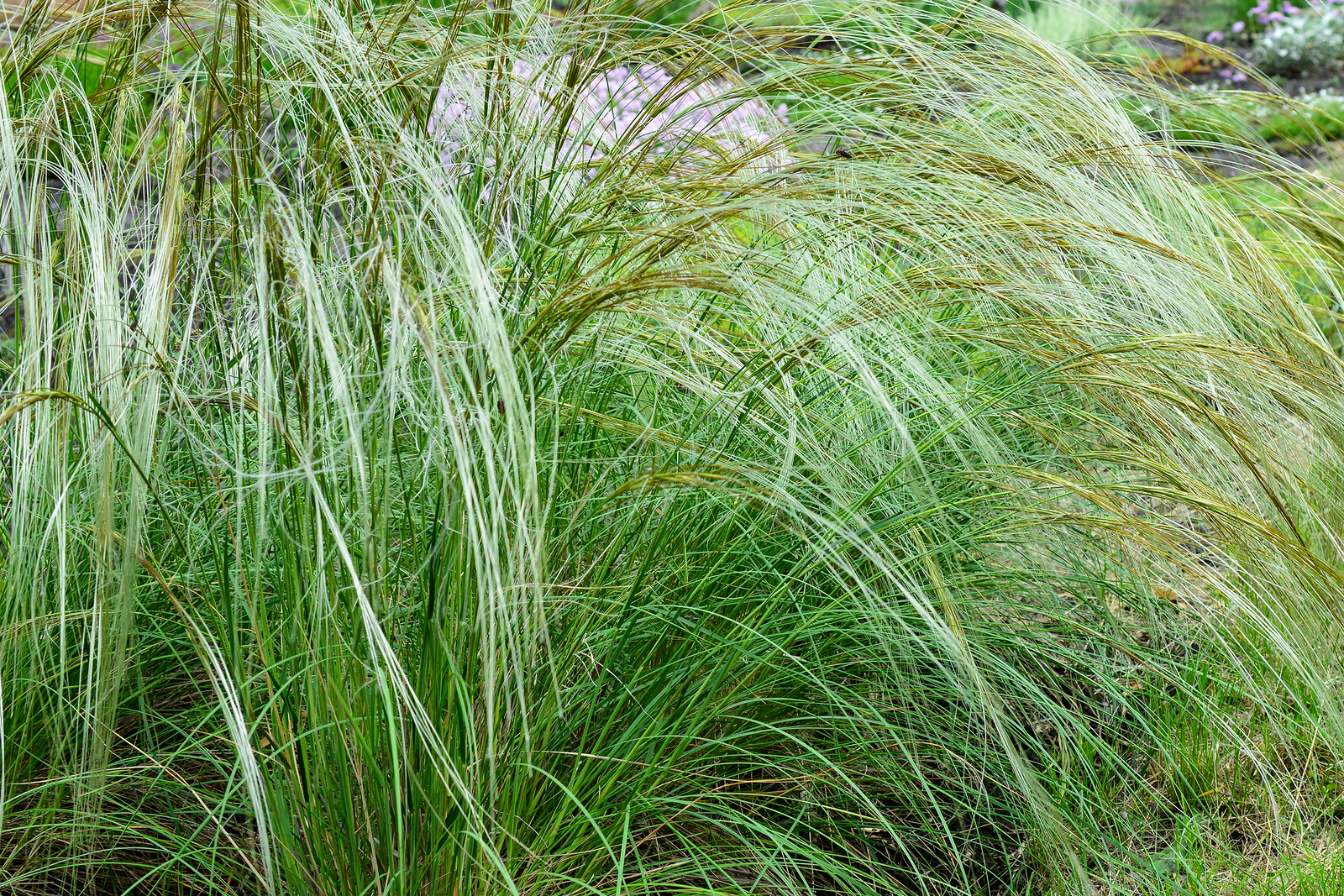 Stipa spp. (Feather grass). Stipa is a perennial grass that bears huge, airy clouds of flowers followed by seed heads that hover above the plants form late summer long into winter. The foliage is fine-textured and often evergreen in mild climates. Stipa grows best in full sun and well-drained soil. Mounding foliage reach 2 feet tall and as wide’ inflorences can grow 6 to 8 feet tall; the infloresecnes contain golden spikelets that provide striking display when backlit by the sun. Zones 8-11.
Stipa spp. (Feather grass). Stipa is a perennial grass that bears huge, airy clouds of flowers followed by seed heads that hover above the plants form late summer long into winter. The foliage is fine-textured and often evergreen in mild climates. Stipa grows best in full sun and well-drained soil. Mounding foliage reach 2 feet tall and as wide’ inflorences can grow 6 to 8 feet tall; the infloresecnes contain golden spikelets that provide striking display when backlit by the sun. Zones 8-11.
 Tithonia rotundifolia (Mexican sunflower). Tithonia is a dramatically tall annual that thrives in the heat. The leaves are large and velvety and the 2 to 3 inch flowers are deep orange or yellow in late summer through fall. Tithonia will grow in average to poor, well-drained soil. Tithonia grow 2 to 5 feet tall; it is an excellent back-of-border plant. Annual in all zones.
Tithonia rotundifolia (Mexican sunflower). Tithonia is a dramatically tall annual that thrives in the heat. The leaves are large and velvety and the 2 to 3 inch flowers are deep orange or yellow in late summer through fall. Tithonia will grow in average to poor, well-drained soil. Tithonia grow 2 to 5 feet tall; it is an excellent back-of-border plant. Annual in all zones.
 Verbena tenuisecta (Moss verbena). Moss verbena is a heat-loving groundcover with bright pink, violet, or white flowers. The fine, ferlike foliage adds textural control to plant beds. Moss verbena is well-suited for hot, dry sites filling spots in shrub beds, slopes, courtyards, entries, edging walkways, patios, or containers. Moss verbena grows 8 to 12 inches tall and 18 to 24 inches wide. Plant moss verbena in well-drained soil in full sun. Zones 8-10.
Verbena tenuisecta (Moss verbena). Moss verbena is a heat-loving groundcover with bright pink, violet, or white flowers. The fine, ferlike foliage adds textural control to plant beds. Moss verbena is well-suited for hot, dry sites filling spots in shrub beds, slopes, courtyards, entries, edging walkways, patios, or containers. Moss verbena grows 8 to 12 inches tall and 18 to 24 inches wide. Plant moss verbena in well-drained soil in full sun. Zones 8-10.
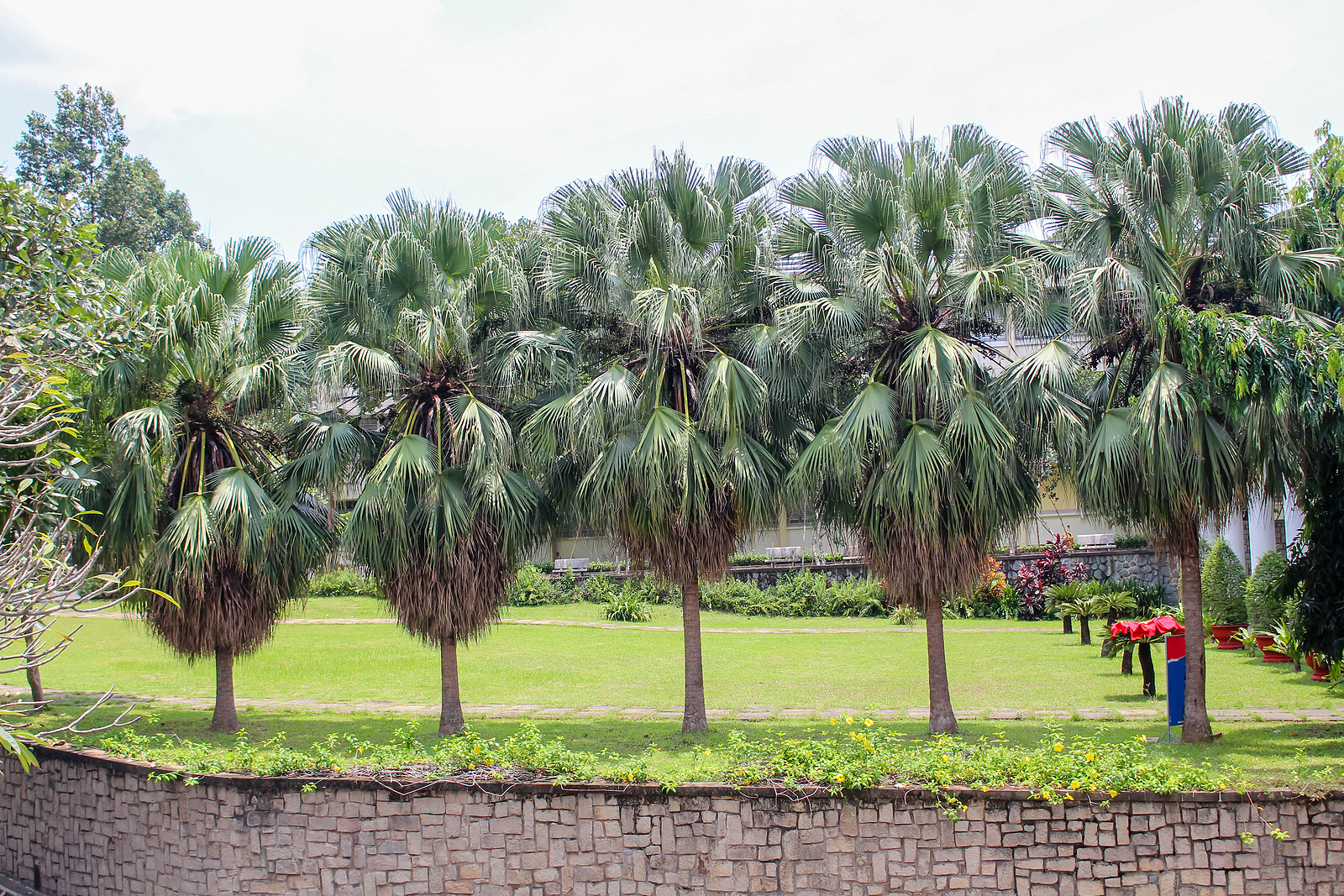 Washingtonia robusta (Mexican fan palm). Washingtonia palms have fan-like fronds. They have massive trunks and quickly grow from 50 to 100 feet tall. They are native to desert climate zones in the southwestern United States and Mexico. They grow best in sandy and well-drained soil. Washingtonia is naturally adapted to sun, heat, and aridity. Their size is best allows them to be best appreciated in large properties, parks, and open spaces. Zones 9-10.
Washingtonia robusta (Mexican fan palm). Washingtonia palms have fan-like fronds. They have massive trunks and quickly grow from 50 to 100 feet tall. They are native to desert climate zones in the southwestern United States and Mexico. They grow best in sandy and well-drained soil. Washingtonia is naturally adapted to sun, heat, and aridity. Their size is best allows them to be best appreciated in large properties, parks, and open spaces. Zones 9-10.















